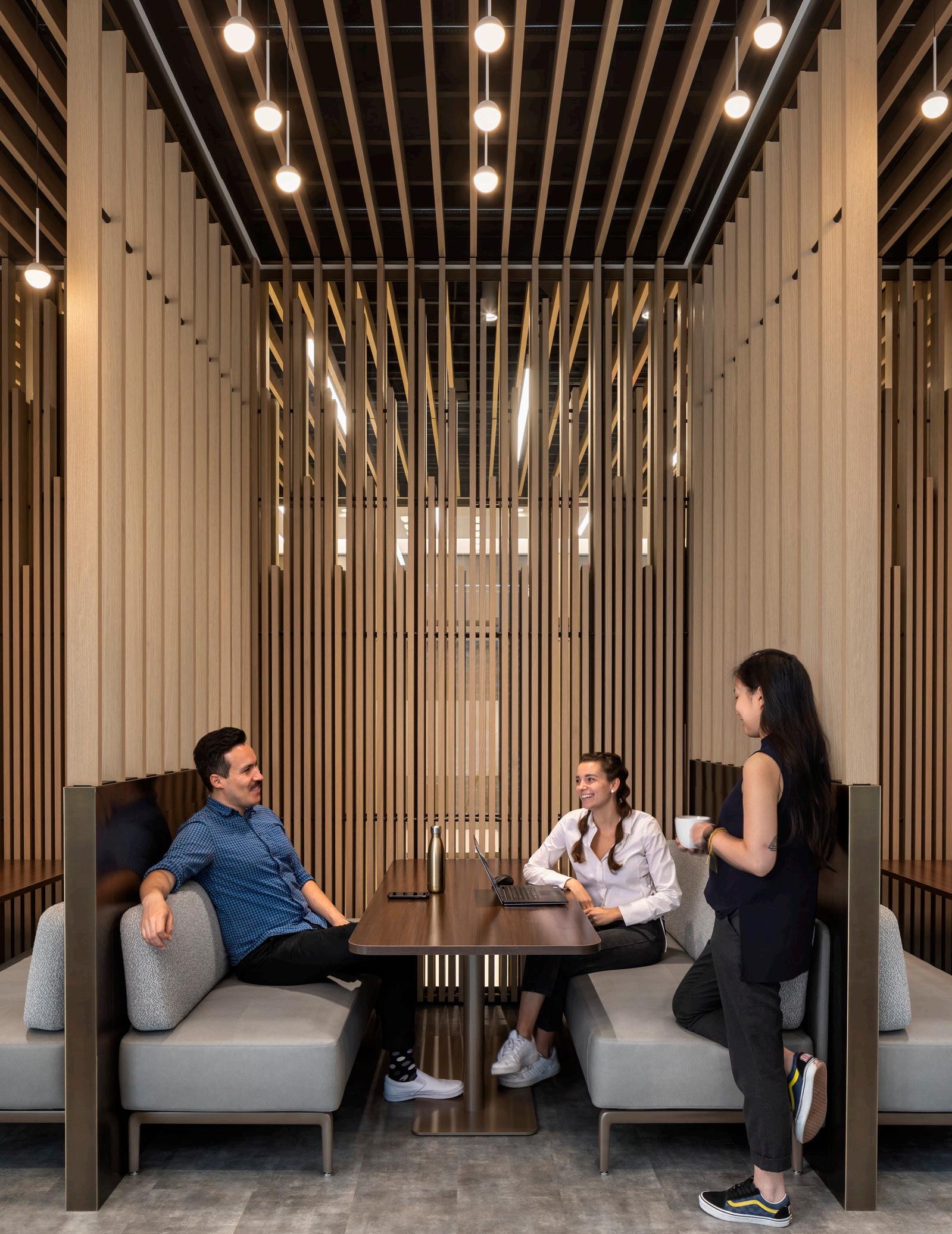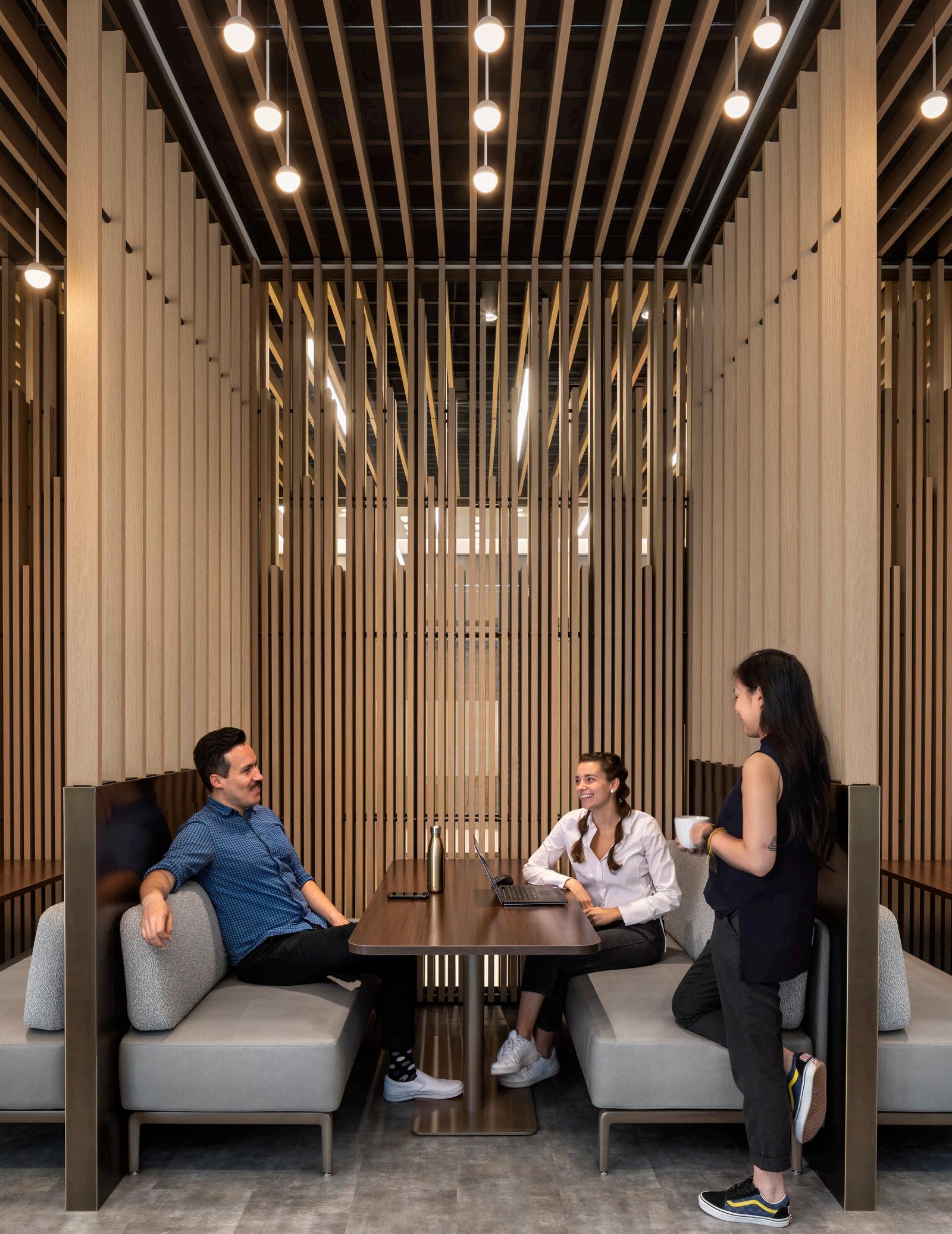

WORKPLACE Ideas 2022
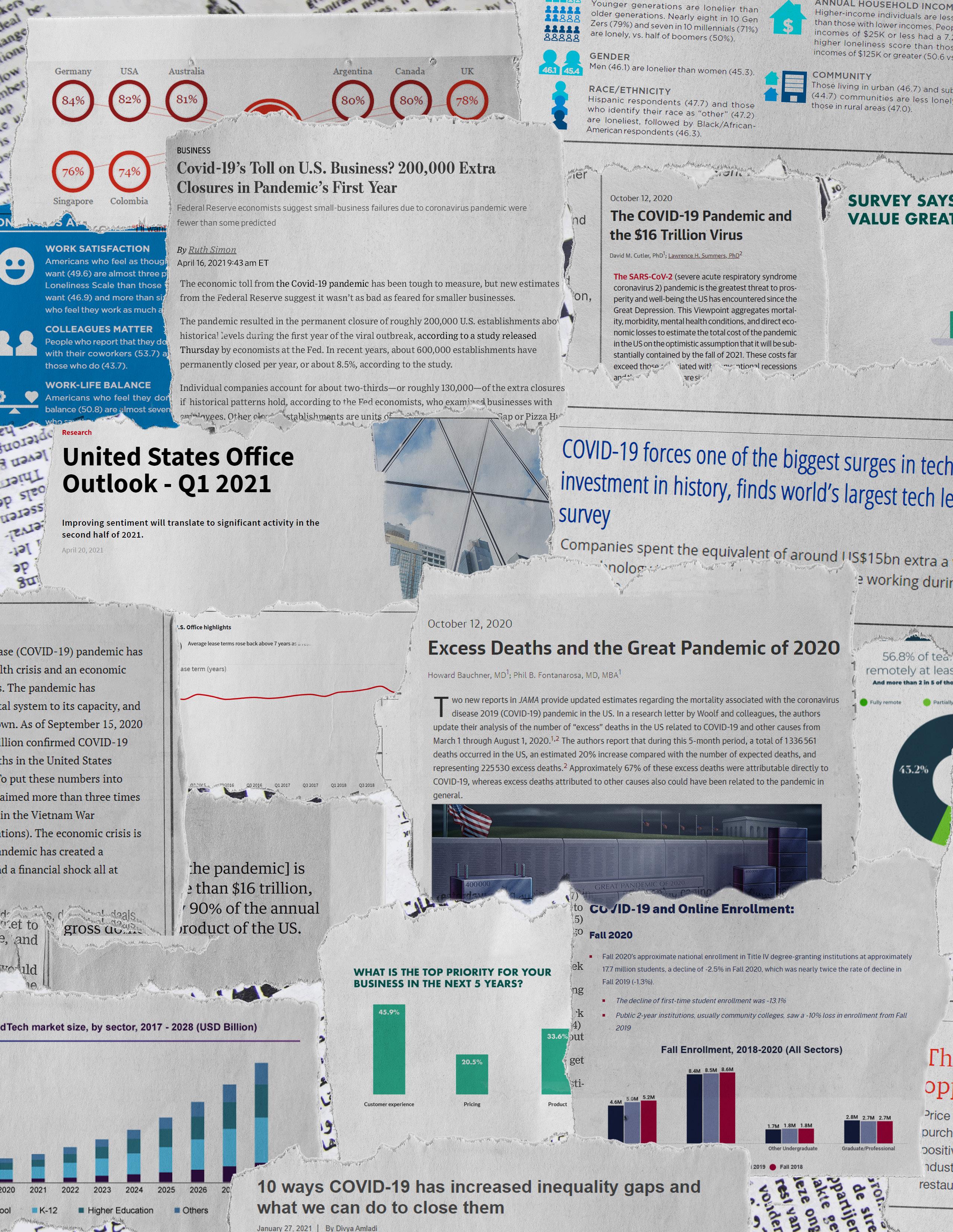
The prediction that 2022 would be another year of living dangerously turned out to be remarkably accurate. January started off with record-high hospitalizations as global COVID-19 cases surpassed 300 million. By late February, the spotlight turned to international conflicts, political upset, and fears of economic inflation.
In the spirit of living dangerously, many Americans resolved to travel in 2022—regardless of COVID-19—and did so in large numbers. By September, mask mandates had fallen away and employees were called back to the office in droves. Not just a year of living on the edge, 2022 was an important turning point in the pandemic and a year of head-spinning change.
It was also a year of radical transformation in the workplace.
Here we present a selection of workplace-related topics that our team explored in 2022:
Strategic Solutions

Hybrid Environments
Healthy Places, Healthy People Elevating Human Experiences
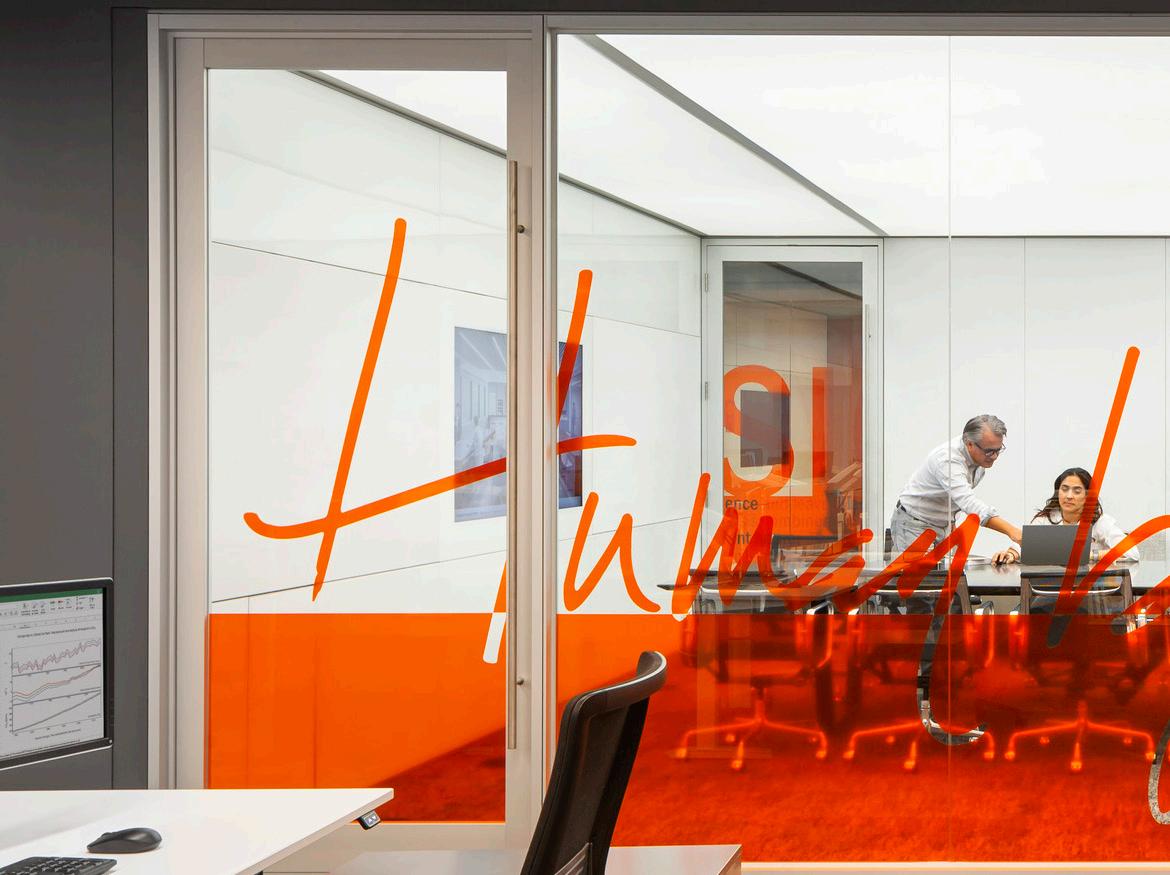
Strategies to maximize flexibility, conserve resources, and accomplish more with less 02 HYBRID ENVIRONMENTS
Merging technology and the built environment to enhance the human experience
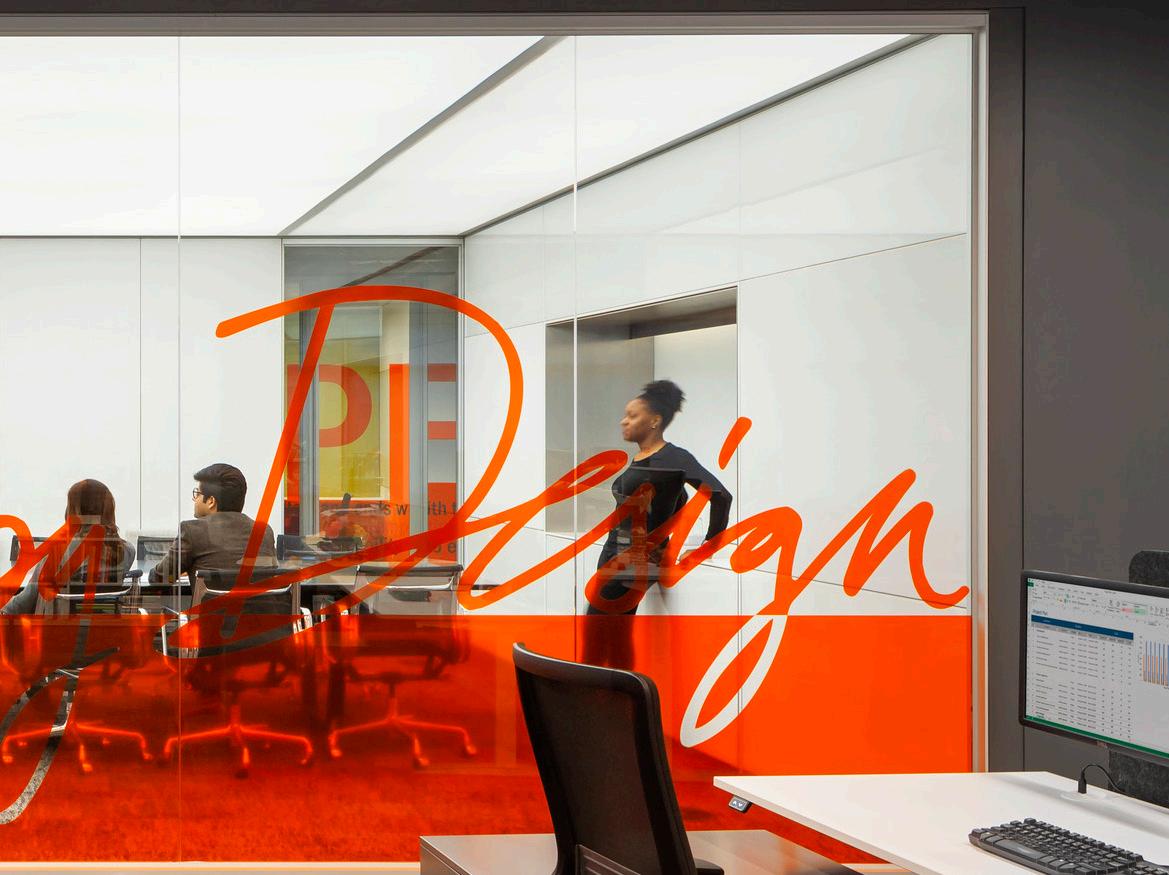
Prioritizing experiences that are authentic, unique, and memorable
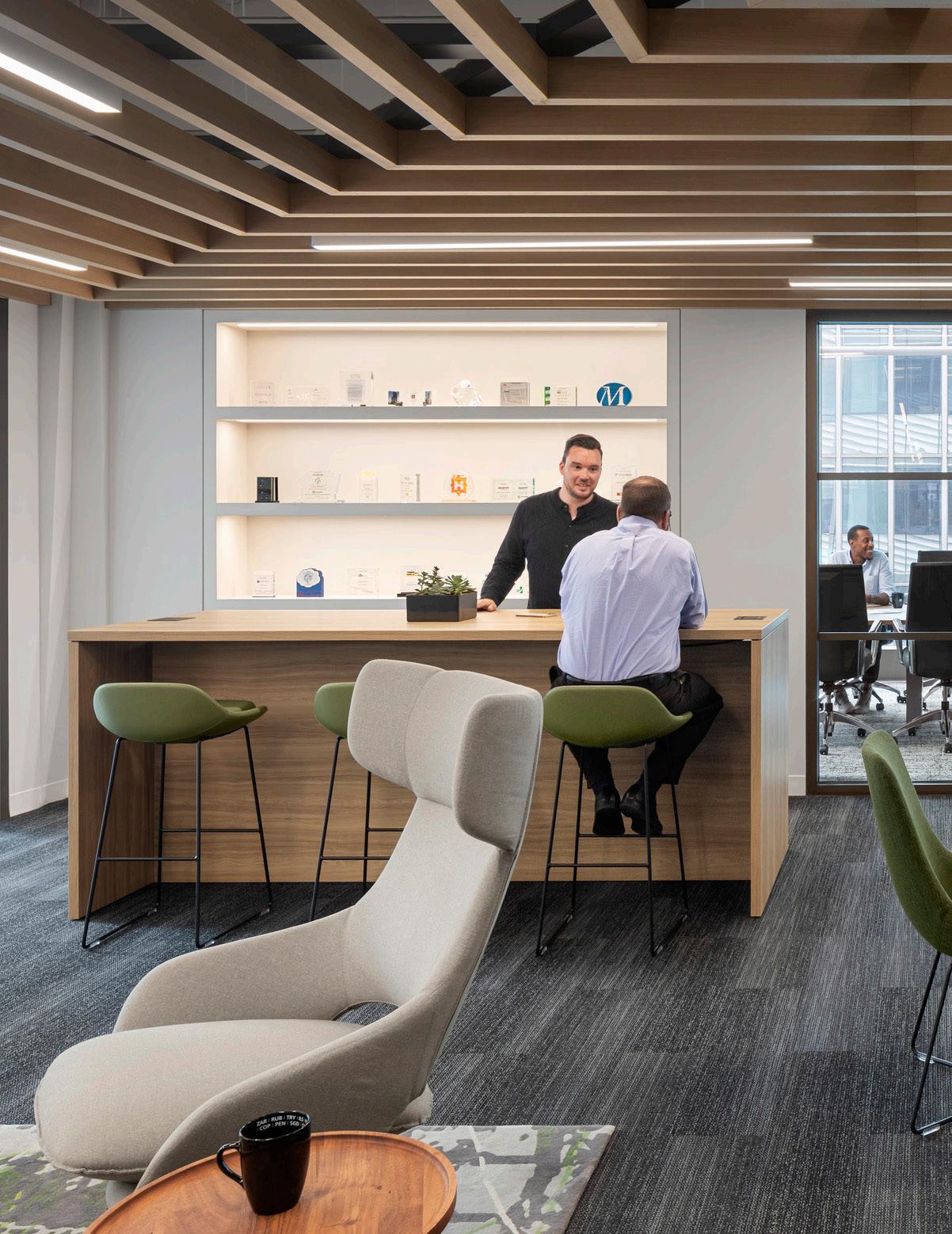
Strategic Solutions
Uncertainty about the future, coupled with economic distress, is driving demand for strategic solutions that enable organizations to maximize resources and adapt quickly to change.
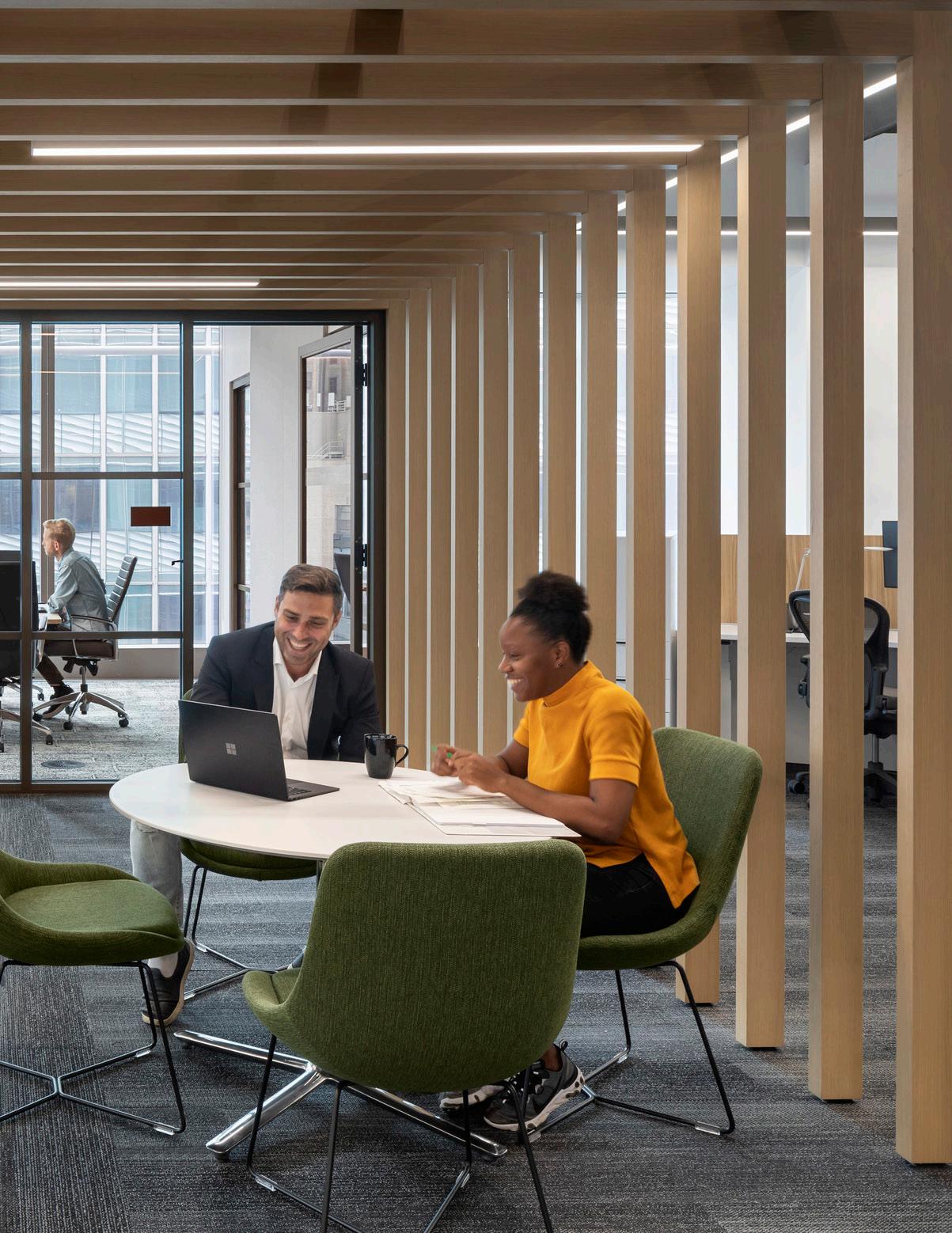
• How can we do more with less?
• How can we empower “you” in a “we” landscape?
• How can we design to be change-ready?
How Can We Do More with Less?
As the world rebuilds in the wake of COVID-19, we have a rare opportunity to explore solutions to old problems in new ways. For instance, considering the issue of leasable workspace, how much space to allocate per person has changed with the widespread adoption of hybrid work. Scaling back the square footage of office space is now a feasible option for many companies looking to cut costs and improve efficiency.
Given the choice, in a traditional full-time office role, most people prefer to have a permanent, assigned seat. But we’ve found in our recent surveys that the autonomy provided by hybrid work trumps the convenience of having a permanent desk at the office.
As companies experiment with alternative seating arrangements, it’s important to determine what really matters to employees. By understanding and acting on specific employee concerns, we can improve the office experience.
What matters most to employees?
What are employees’ top concerns about using unassigned/ shared workstations?
Flexibility in choosing where to work (in the office or remotely)
Flexibility in setting their own schedule outside of traditional office hours
Having an assigned workstation in the office
72% 18% 10%
Based on 341 compiled employee responses from Perkins Eastman surveys conducted in July and October 2021
1
2
3
Cleanliness of workpoints (62%)
Not knowing where to sit each day when they come into the of fice (46%)
Storage space (37%)
Based on 573 compiled employee responses from Perkins Eastman surveys conducted in August and October 2021

Strategies to
DO MORE WITH LESS
Multifunctional Spaces
• Look for opportunities to utilize spaces beyond their intended use
Creative Repurposing
• Adapt, modernize, and re-use existing buildings
Alternative Delivery
• Enhance design and project control through computational and evidencebased design
This is a time of great transformation for the workplace. Many of our clients are experimenting with new models of work—hybrid, flexible—and it’s exciting to help them find creative solutions that really make a difference in how employees engage with each other and their work.”
— Connor Glass Principal | Board Director | Practice Leader | Workplace EDISON PROPERTIES, LLC
NEWARK, NJ
EDISON PROPERTIES, LLC
NEWARK, NJ
How Can We Empower “You” in a “We” Landscape?
Free-address seating, or “hot desking,” can be a cost-effective solution for hybrid workers. But the associated loss of privacy and personal space can corrode employee productivity, engagement, and satisfaction. In offices where seats are unassigned, it’s especially important to design with sensitivity to employees’ sense of belonging, autonomy, and comfort.
Studies show that having a sense of ownership and control over one’s work environment contributes to a “home advantage.” Employees are more confident and capable when they feel secure in their environment; even simple solutions, like allowing employees to rearrange furnishings and décor, can lead to increased happiness and productivity.
What brings hybrid employees to the office?
“heads down” work
“heads up” work
Are employees more or less productive working remotely?
12% Focused, Individual Work
33% Opportunities for Mentorship/ Professional Development
39%p Participating in Meetings
62%p Collaboration with Colleagues
Combined Perkins Eastman survey data of 855 employees across three different industries conducted in June, July, August and September 2021.
42+
42%p More Productive
Based on 573 compiled employee responses from Perkins Eastman surveys conducted in August and October 2021
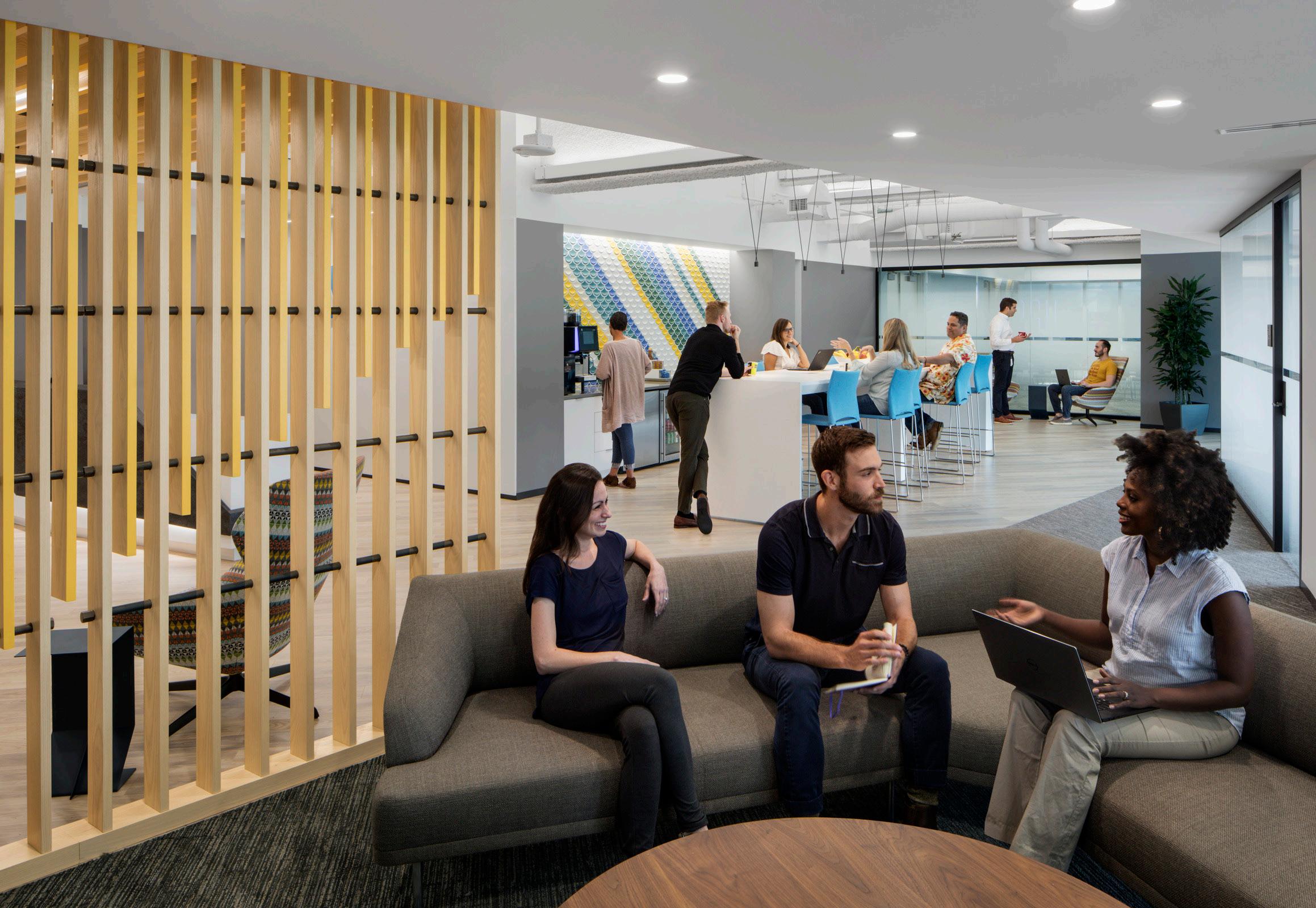
Strategies to
EMPOWER “YOU” IN A “WE” LANDSCAPE
Ownership & Autonomy
• Look for shared spaces that can be personalized and cared for by a team
• Fit out phone booths and focus rooms with user-controlled task lighting, ergonomics, and temperature controls
• Include employees in decisions about hybrid policies and workplace design
Cues of Identity & Belonging
• Design welcoming, comfortable spaces
• Use environmental branding to showcase the company’s mission, values, or history
• Provide opportunities for informal collaboration and/or social interactions.
Psychological Safety & Inclusivity
• Support employees and get to know their values and priorities
• Encourage risk-taking at all levels
• Take measures to ensure all employees feel equally heard and included.
When people are comfortable in their environment, they are more engaged and better able to focus on their work. Allowing employees to control certain aspects of their personal space—whether it is the temperature, task lighting, or furniture—leads to happier, healthier, and more productive employees.”
— Iramis Luz Audet Principal | National Co-Practice Leader | Workplace
How Can We Design to be Change Ready?
Through our wide-ranging experience planning and designing workplace projects, we know that office design can be a major driver of successful change. When space aligns with organizational values and business goals, it pays dividends in employee engagement, retention, and productivity. Change management, carried out in conjunction with design, supports holistic and sustainable transformation.
Studies from leading researchers at companies like McKinsey, the Boston Consulting Group, and the Harvard Business Review cite a 50–80% failure rate in change efforts and programs. The more complex the program, the higher the rate of failure. By anticipating future scenarios—and proactively implementing changemanagement solutions—businesses can build resilience and adapt more readily to change.
Why does change management sometimes fail?
Why is change management a worthwhile investment?
Adapting for Success — A Guide to Change Management
by Edwin Petersen, Finance Expert at Toptal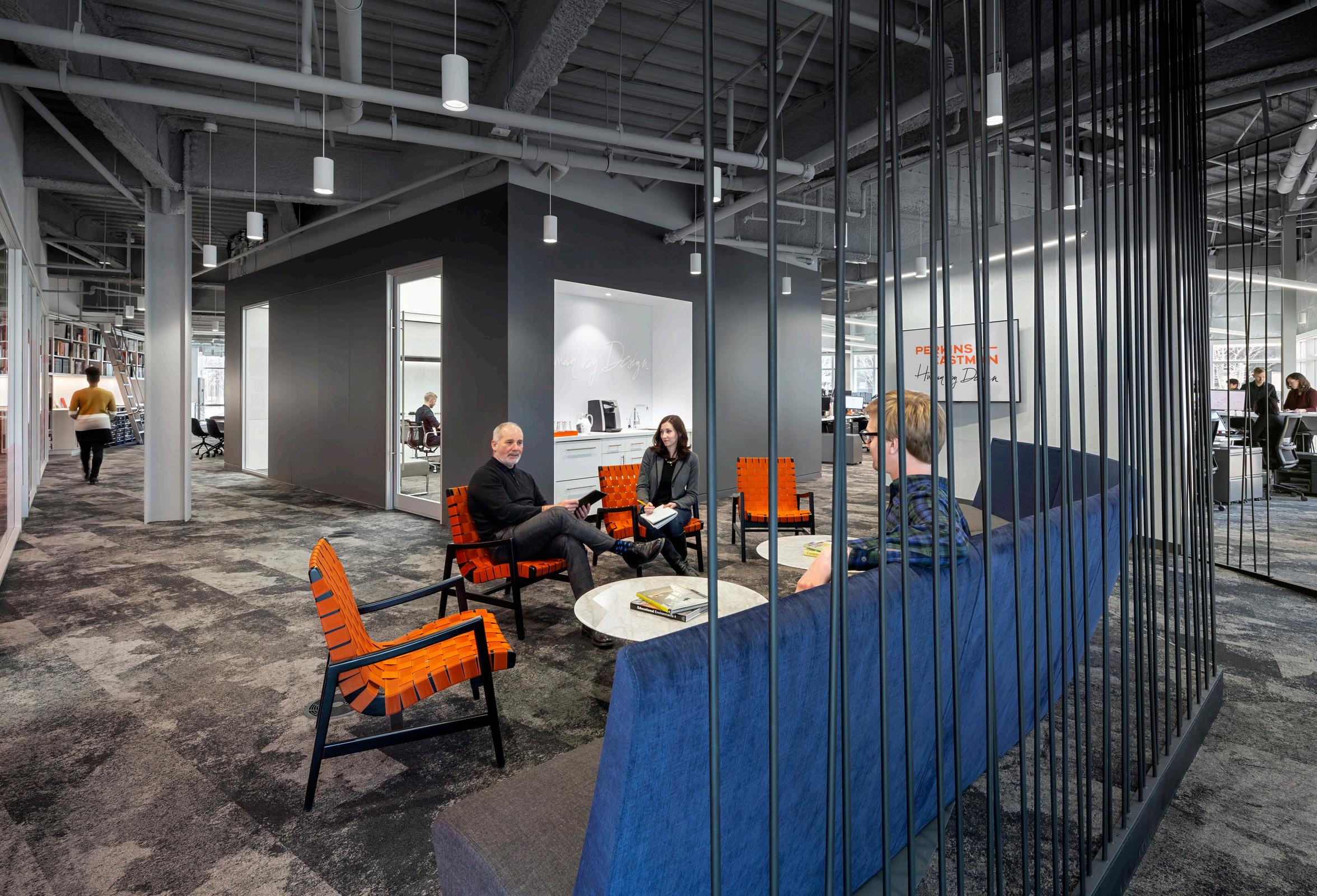
Strategies to
DESIGN TO BE CHANGE READY
Plan for Multiple Futures
• Gauge readiness for change
• Examine and challenge assumptions
• Work in teams to brainstorm and identify driving forces of change
Enable a Change-Ready Culture
• Frequently and actively engage staff in decision-making
• Ensure employees feel they are heard and their voice matters
• Build a collective vision that prioritizes agility and responsiveness
Prioritize Mobility
• Adopt technologies and policies to withstand unforeseen office closures
• Place appropriate technology throughout the office to enable working from anywhere
• Prioritize flexible, moveable furnishings, and technology infrastructure
With no set formula for building a resilient organization, it becomes paramount to develop unique, context-specific responses to multiple future scenarios”
— Madona L. Cumar-Malhotra, Assoc. AIA | LEED AP BD+C Senior Associate

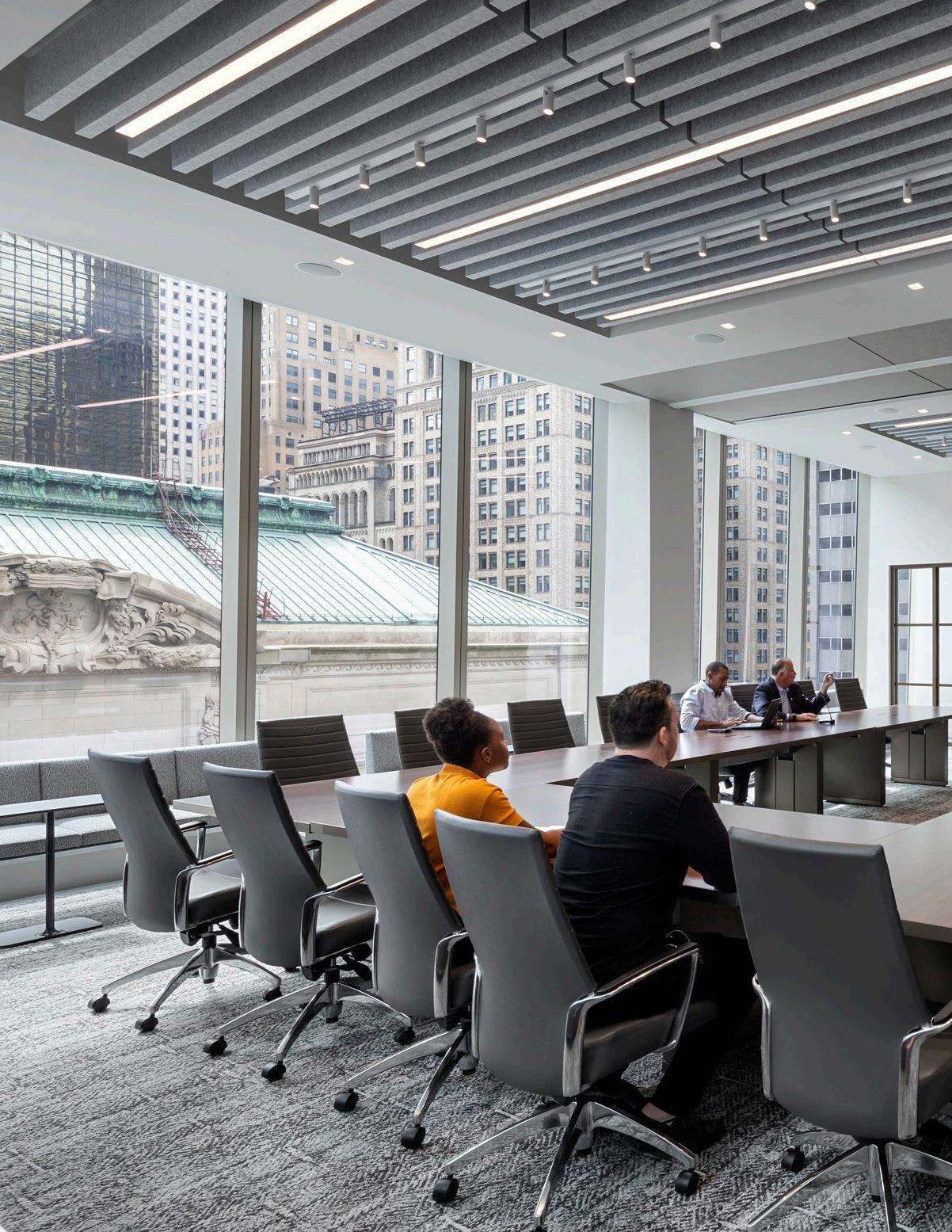
Hybrid Environments
COVID-19 spurred a rapid and broad digital transformation. Personally and professionally, technology is more ingrained in our daily activities than ever before. As companies embrace hybrid work, there is an opportunity to leverage physical and digital resources to enrich the built environment, optimize the user experience, and support human connection.
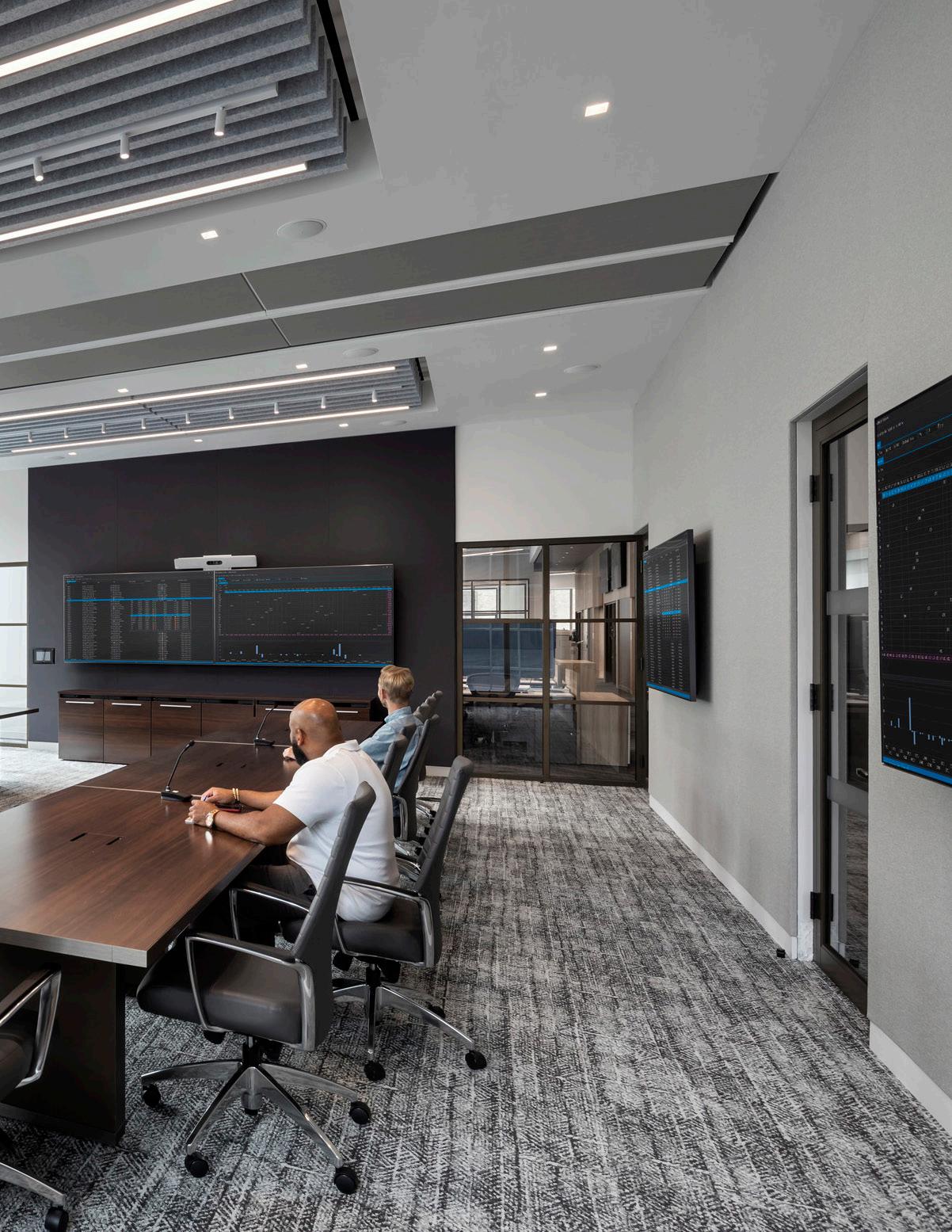
• How can we build equity in hybrid environments?
• How can we build effective hybrid teams?
• How can we bridge the location divide?
Click on question to go to each strategy solution
How Can We Build Equity in Hybrid Environments?
Combining remote and in-office work brings new organizational dynamics that can undermine diversity, equity, and inclusion. Hybrid work can be great for employees, but there are concerns that those who work mostly from the office will have an unfair advantage over those who do not. These fears aren’t entirely unfounded; a 2021 survey found that 67% of supervisors consider remote employees to be more “replaceable” than employees who work in the office.
Equity depends on many factors, but an employee’s visibility and accessibility to the higher-ups, as well as their ability to navigate relationships and ask for the resources they need, are key in hybrid work settings. Learning and staying informed about organizational, social, and technological biases in the workplace better-equips us to address potential challenges before they arise.
Top challenges associated with remote work
44% of survey respondents feel disconnecting from work at the end of the day is a major challenge when working remotely
44
Internal Perkins Eastman survey completed in May 2020 with 625 respondents
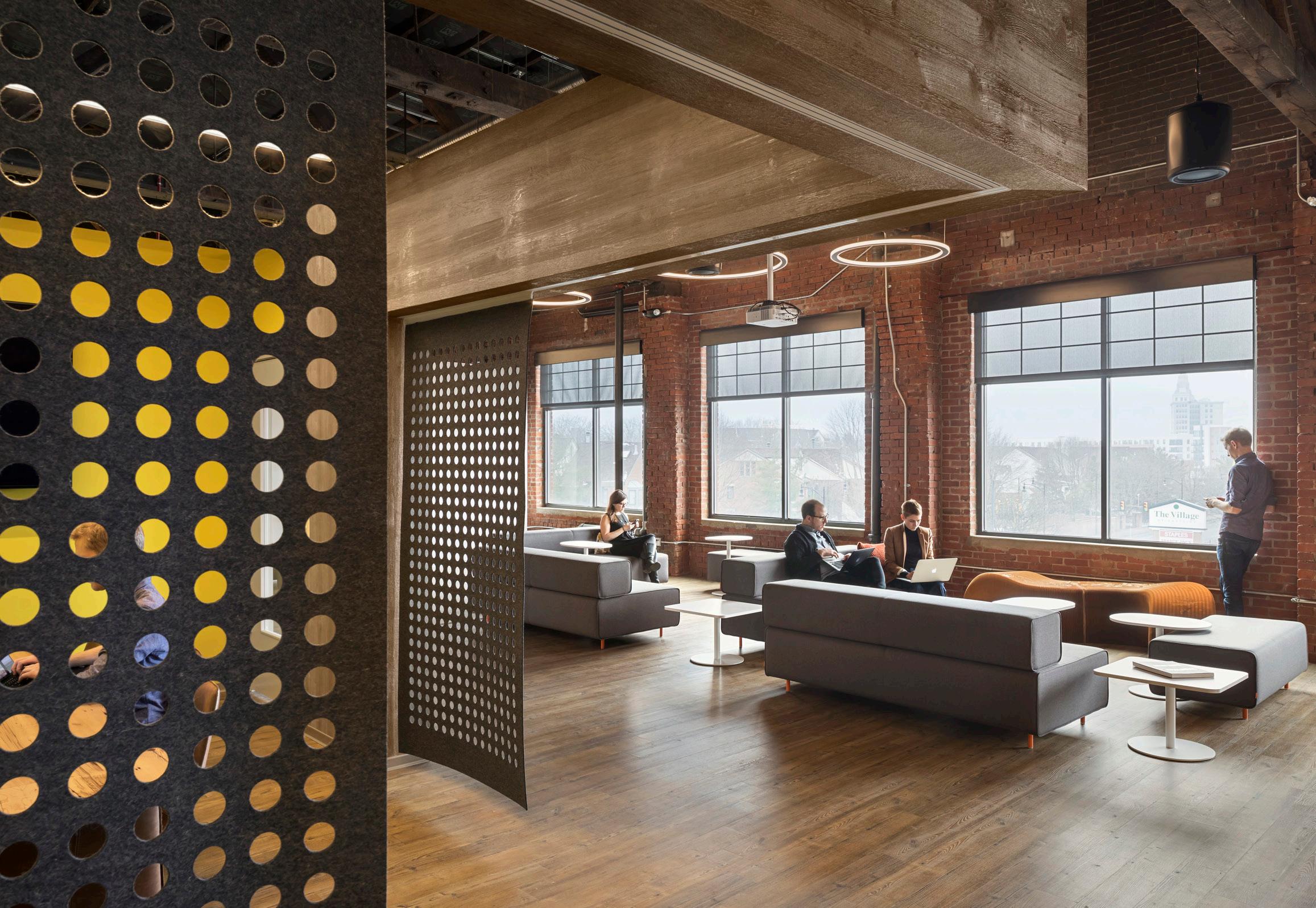
Strategies to
BUILD EQUITY IN HYBRID ENVIRONMENTS
Design for Everyone
• Provide user-friendly technology and amenities catered to hybrid workers
Reward Results
• Set clear expectations around productivity and communication to facilitate work/life balance while promoting visibility and accessibility for remote workers
Bring Hominess to the Office
• Help employees feel more at home by encouraging them to personalize their workspace—even if it is a temporary seat in a free-address office
Navigating the hybrid workplace is as much a social challenge as it is a technological one. It is the responsibility of everyone in an organization, but especially leaders, to make themselves equally accessible to remote and in-office workers.”
— Jessie Catenacci, AIA | LEED GA Senior Associate
How Can We Build Effective Hybrid Teams?
Concerns about the impact of remote work on collaboration, mentorship, and social connection are top-of-mind for many of our clients. But high-tech tools and comfortable communal spaces are no guarantee of success; culture—at the team and organizational level—is key to establishing healthy norms and building trust, which enable employees to work together effectively.
The nature of work is changing—and that’s a good thing—but our physical work environments and the tools we use must keep pace. Our Design Strategy team works to understand and apply technological, spatial, and behavioral solutions in our workplace designs to help hybrid teams work together more effectively.
The five keys to a successful team
Psychological Safety
Team members feel safe to take risks and be vulnerable in front of each other.
Dependability
Team members get things done on time and meet expected levels of excellence.
Structure & Clarity
Team members have clear roles, plans, and goals.
Meaning
Work is personally important to team members.
Impact
Team members think their work matters and creates change.
https://rework.withgoogle.com/blog/five-keys-to-a-successful-google-team/
Improved inclusivity in all-virtual meetings
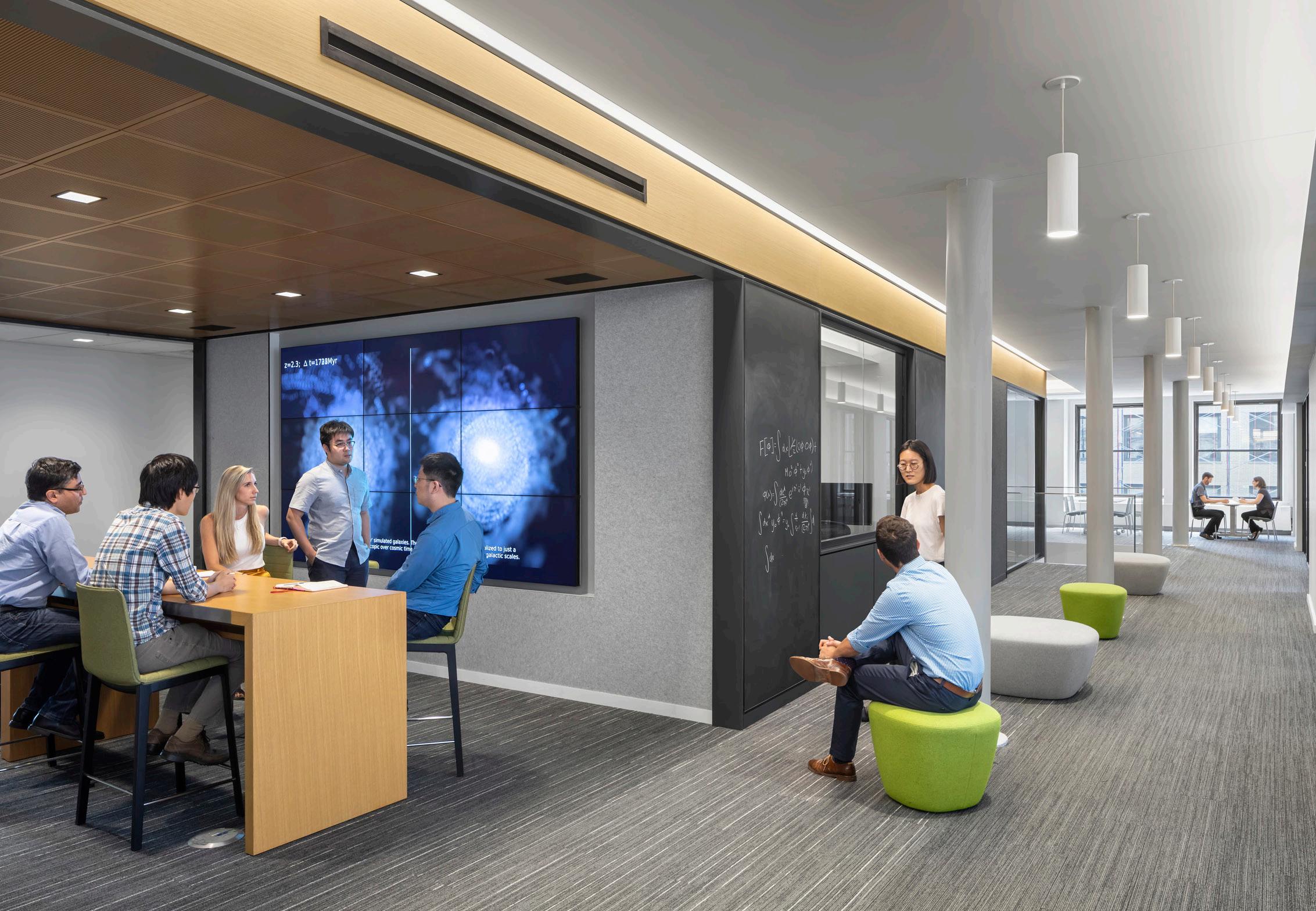
Strategies to
BUILD EFFECTIVE HYBRID TEAMS
Lead with Empathy
• Encourage feelings of safety and trust by demonstrating empathy
Establish Team Norms
• Encourage teams to create their own “communication guide,” establishing clear expectations around communication
Design for the Team, Not the Location
• Physically arrange space, furnishings, and technology (e.g. wide-angle cameras, height-adjustable desks) to capture body language and gestural cues in virtual communications
Fostering a respectful and supportive team culture is becoming increasingly important with the shift to hybrid work. When team members listen to one another and show genuine interest in each other’s work and ideas, creativity and innovation thrive.”
— Rebecca Milne, LEED GA
Associate Principal | Director of Design Strategy

How Can We Bridge the Location Divide?
The “location divide” refers to discrepancies between the remote and in-office employee experience. Home-based employees, for example, may not have access to office equipment or specialized software. Or they might be overlooked for a raise or promotion because they have less visibility than their in-office counterparts. Office-based employees, on the other hand, might deal with interruptions and distractions that negatively impact their workflow.
As teams adapt to hybrid work, it is essential to employ tools that enable flexibility and encourage social connection across the location divide. But having the right tools is only part of the equation. It’s important to address company policies and communications, and to establish clear expectations around productivity and team norms.
Examples of starter-pack essentials for hybrid teams








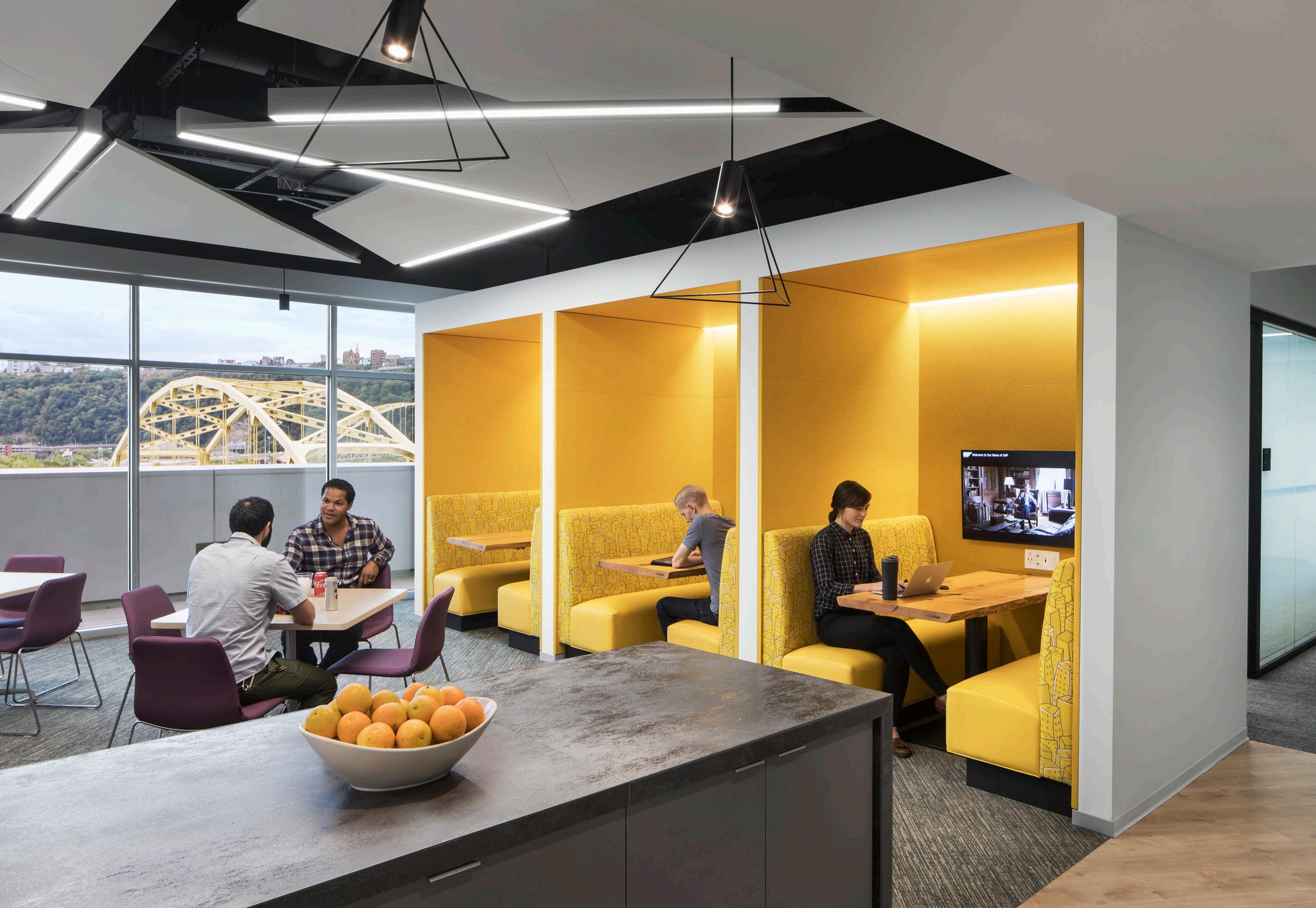
Strategies to
BRIDGE THE LOCATION DIVIDE
Digital
• Explore digital tools that respond to touch and gestures to enhance connection and understanding in virtual communications
Physical
• Ensure home-based employees have the equipment they need to do their work, including monitors, headsets, webcam, Wi-Fi extenders, and mobile power banks
Interpersonal
• Provide opportunities for informal communications between on-site and home-based workers
• Establish activity-based work zones in the office to provide variety and choice for mobile employees
It’s possible to achieve something that is better than before. With the right tools and strategies, we can leverage hybrid work to collaborate more effectively, improve performance metrics, and bring people together.”
— Katherine Gluckselig Associate | Senior Design Strategist
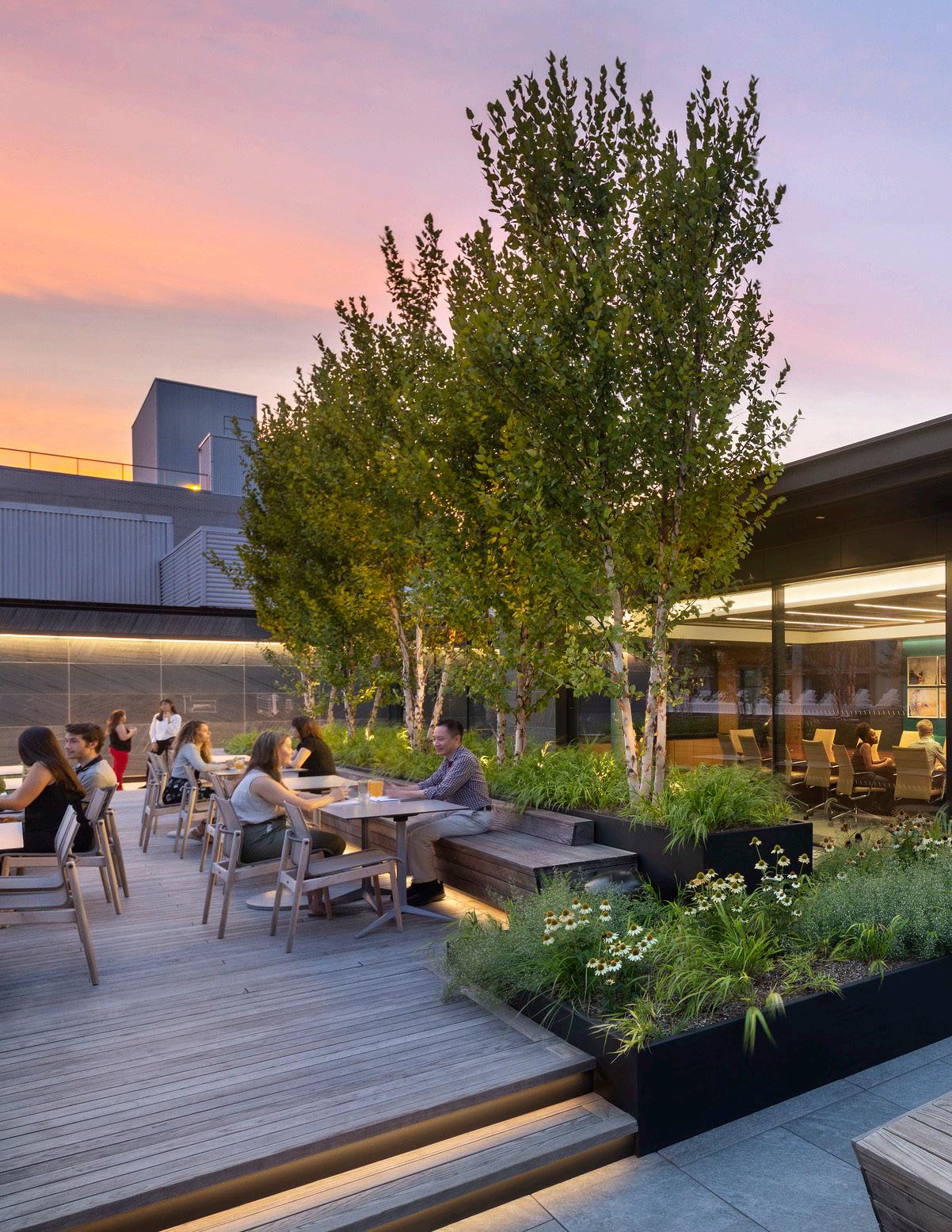
Healthy Places, Healthy People
COVID-19 transformed ideas around what it means to be and feel safe—at work, at school, and in our day-to-day interactions with others. From a design perspective, there are practical strategies to support health and well-being, like smart building systems and antimicrobial materials; but there is a larger opportunity to examine and holistically address the relationship between people, architecture, and the planet.
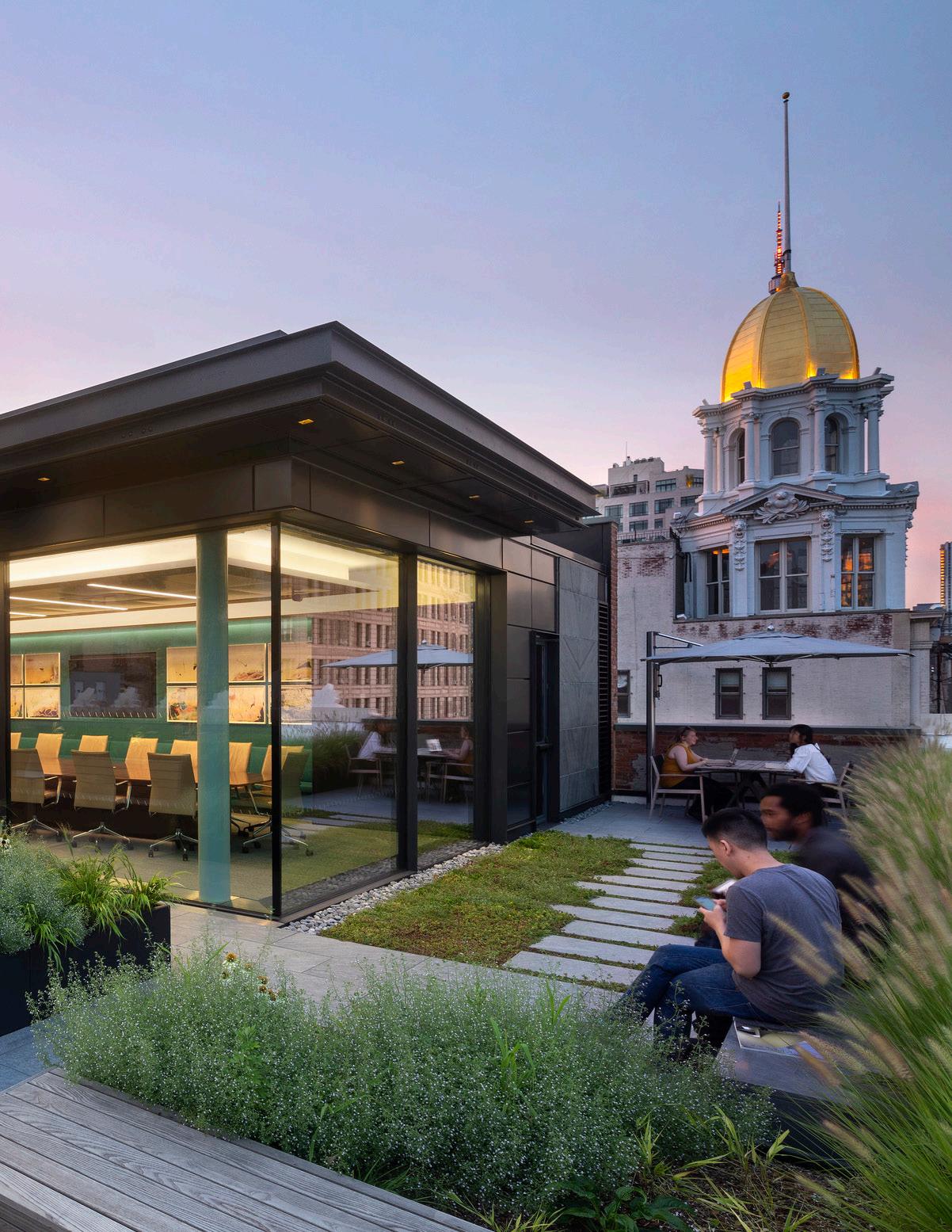
• How can we maximize the return on investment of stakeholder engagement?
• What benefits could we get from working in person?
• How can workplace design help employees flourish?
How Can We Maximize the ROI of Stakeholder Engagement?
Stakeholder engagement is an underrated and often-overlooked tool of success. Through our work with clients—and within our own team—we have experienced first-hand the power of stakeholder engagement to improve relationships, uncover hidden opportunities, and facilitate creative problem-solving.
Our approach is centered on a three-step process: 1) Mapping the stakeholder landscape; 2) Prioritizing key stakeholders based on levels of commitment and influence; and 3) Engaging with stakeholders to build a web of advocacy and knowledge. Stakeholder engagement—done right—benefits projects and people, helping to avoid delays, reduce project costs, and ultimately generate more creative, sustainable, and human-centered solutions.
Promoting Interactive Stakeholder Engagement

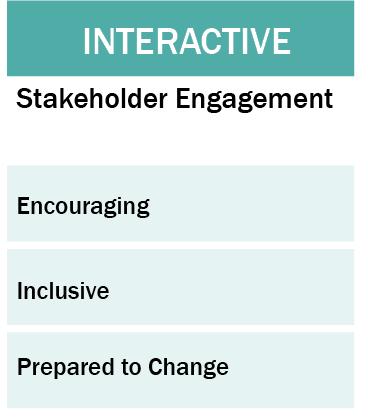
Note: Adapted from The P2 Pillars – IAP2 Federation
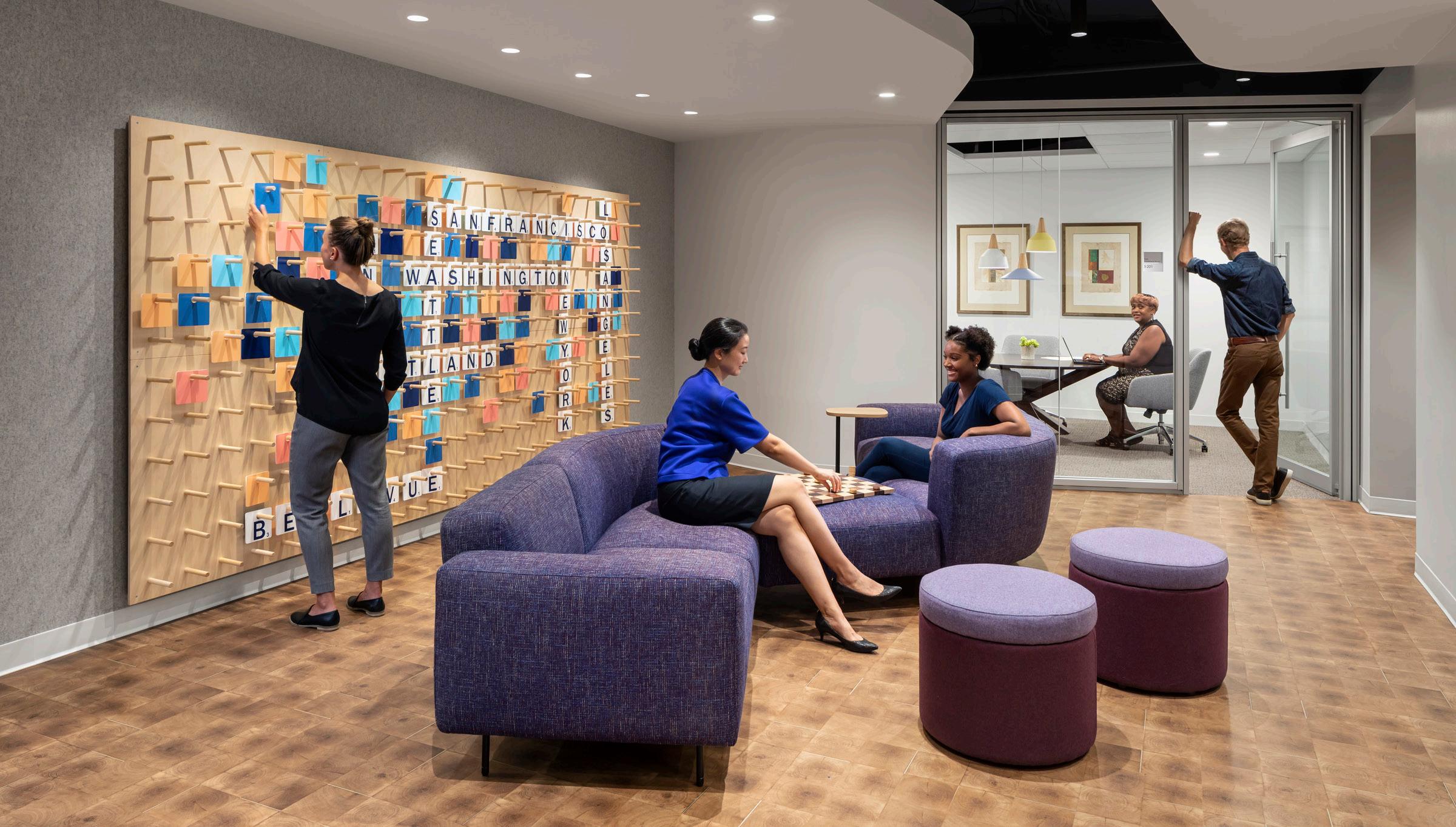
Strategies to
MAXIMIZE THE ROI OF STAKEHOLDER ENGAGEMENT
Inform
• Use multiple methods of communication to inform and educate stakeholders, such as open houses, fact sheets and brochures, social media posts, and dedicated websites
Consult
• Develop surveys, focus groups, polls, and interviews to gather input and learn from stakeholders
Involve
• Implement interactive workshops, citizen panels, and crowdsourcing to engage stakeholders in design and decision-making processes
Collaborate
• Form advisory committees and work with stakeholders through online forums and working groups
Empower
• Systemize and share findings; encourage input from the larger community through the formation of citizen juries and community delegations
Engaging stakeholders early and often is key to success. Our human-centered approach leads us to creative workplace solutions that support flexibility and longterm growth.”
— Shannon Cole, NCIDQ Principal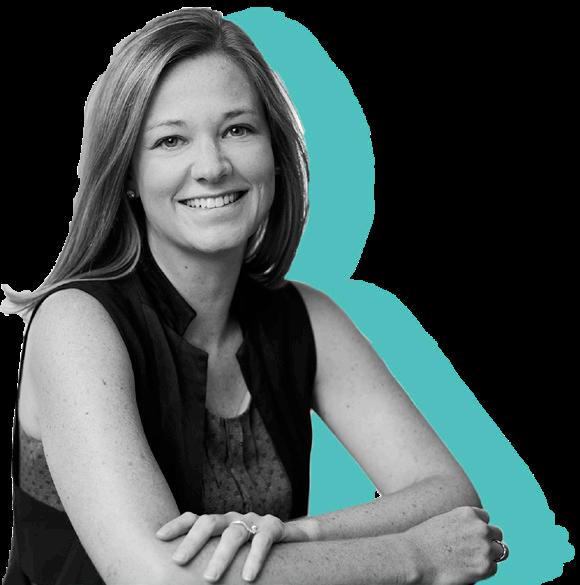
What Benefits Could We Get From Working In-Person?
Even before the COVID-19 pandemic, the workplace was fraught with challenges. In open-plan settings, many coped with noise, poor lighting, and lack of privacy on a daily basis. In 2017, the former U.S. Surgeon General called attention to a loneliness epidemic in the workplace—and this was before employees were forced out of the office due to COVID-19-related precautions.
Now, after an extended period of working primarily from home, employees are being called back to the office. But what incentives are there to go back when they have the tools they need to work from home? In our workplace practice, we are exploring ways to address long-standing workplace challenges, enhance the benefits of working in-person, and transform the office into a place where people want to be.
Intermittent Collaboration

A synergistic work model that oscillates between intense in-person group collaboration and time by oneself/away from the social pressures of the group.
Synchronicity

We are embodied, situated, social beings and by moving, talking, and working together, our brains and bodies fall into a joint rhythm.
Nonverbal Communication

Thinking does not exclusively happen in the brain; our hands and our gestures lead us into and help us through our thoughts. Non-verbal communication builds rapport and connects groups.
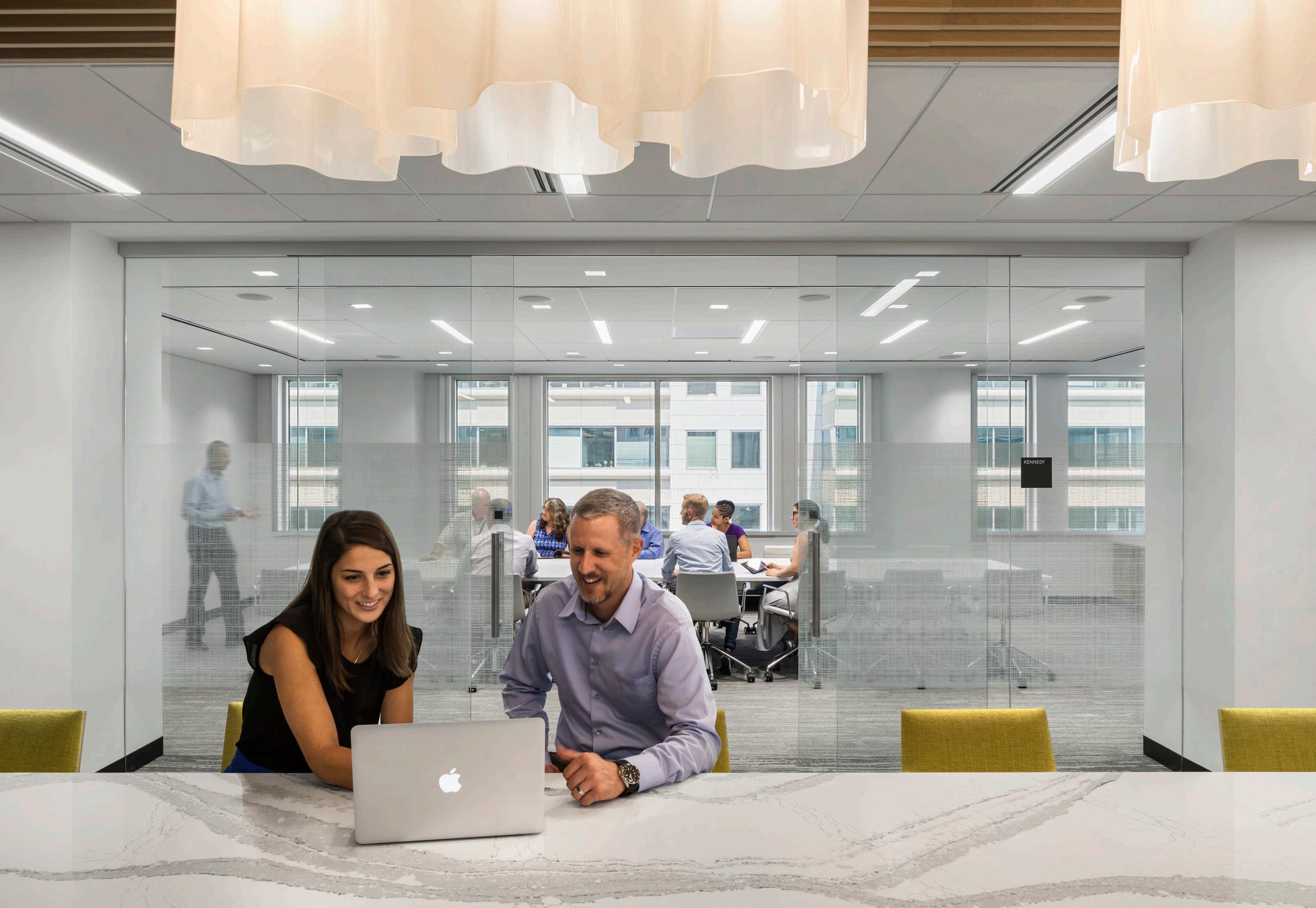
Strategies to COLLABORATE MORE EFFECTIVELY
Prioritize “Burstiness”
• Provide a variety of communal spaces that are relaxed, comfortable, and nonhierarchical (meaning there is no “head of the table”)
Encourage Personalization
• Designate neighborhoods within the office that can be personalized and cared for by a team
Design for Vitality
• Incorporate elements of biophilia (connection to nature) and visual complexity; leverage strategic adjacencies to enhance “buzz” and engagement
Externalize Shared Thinking
• Provide analog and digital tools for team members to create, display, and refer back to ideas developed in collaboration
Having strong connections with the people we work with can not only improve individual health and wellbeing, but it can also improve productivity and the overall state of the team.”
— Hanna Negami, Ph.D. Data Strategist
How Can Workplace Design Help Employees Flourish?
Flourishing—a state of goodness, generativity, growth, and resilience—goes hand-in-hand with productivity and engagement. But even though many companies strive to create work environments that support well-being, fewer than 50% of employees say they are flourishing at work. The majority feel they are moderately mentally healthy; nearly 7% believe they are languishing.
According to positive psychologist Martin Seligman, the capacity to flourish hinges on six criteria, coined the PERMA-V framework for wellbeing: Positive Emotions, Engagement, Relationships, Meaning, Achievement, and Vitality. Our team is particularly interested in the question of how workplace design can support each of these factors.
Can we design forJoy?
In her book Joyful: The Surprising Power of Ordinary Things to Create Extraordinary Happiness, Ingrid Fetell Lee shares evidence-based strategies to bring about positive emotions through the design of our physical surroundings. Fetell Lee connects 10 “aesthetics of joy,” identified as energy, abundance, freedom, harmony, play, surprise, transcendence, magic, celebration, and renewal, to specific characteristics of the built environment such as brightly-colored accents and artwork, spiral staircases, hidden nooks, skylights, quirky and playful design elements, and round or spherical furnishings.
Note: Adapted from The Aesthetics of Joy via https://aestheticsofjoy.com/the-book
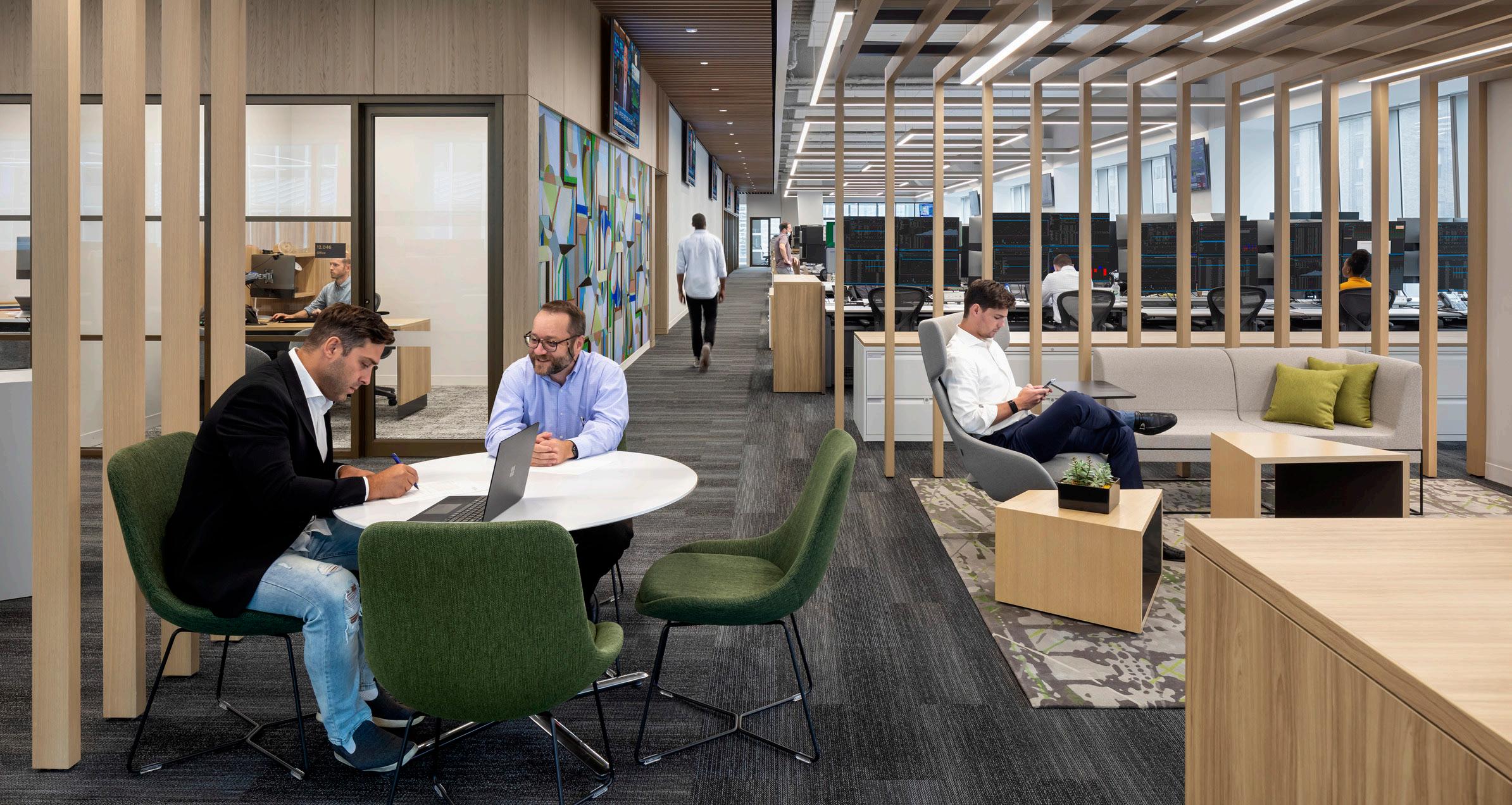
Strategies to
HELP EMPLOYEES FLOURISH
Positive Emotions
• Provide a mix of soothing & energizing colors, natural light, and minimalist design elements
Engagement
• Allow workers to control their sensory stimulation with adjustable task lighting, temperature controls, and movable partitions between desks
Relationships
• Provide a mix of spaces for collaboration and individual work, as well as informal areas for socialization
Meaning
• Explicitly reinforce the purpose, history, and culture of the company through design
Achievement
• Design for psychological safety and comfort
Vitality
• Incorporate biophilic elements such as potted plants, views to nature, ample sunlight, and natural materials
Note: Adapted from the PERMA-V framework
Flourishing is a multi-dimensional construct. In positive psychology it encompasses wellbeing, happiness, and life satisfaction. When a human being is flourishing, the impacts on the workplace are manifold: fewer missed days of work, higher resilience, clearer life goals, and higher connectivity.”
— Kate Scavo, NCIDQ Senior Associate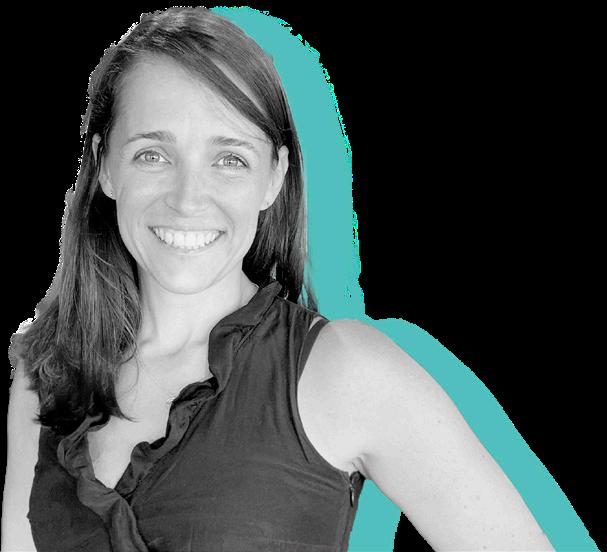 TD SECURITIES: ONE VANDERBILT NEW YORK, NY
TD SECURITIES: ONE VANDERBILT NEW YORK, NY
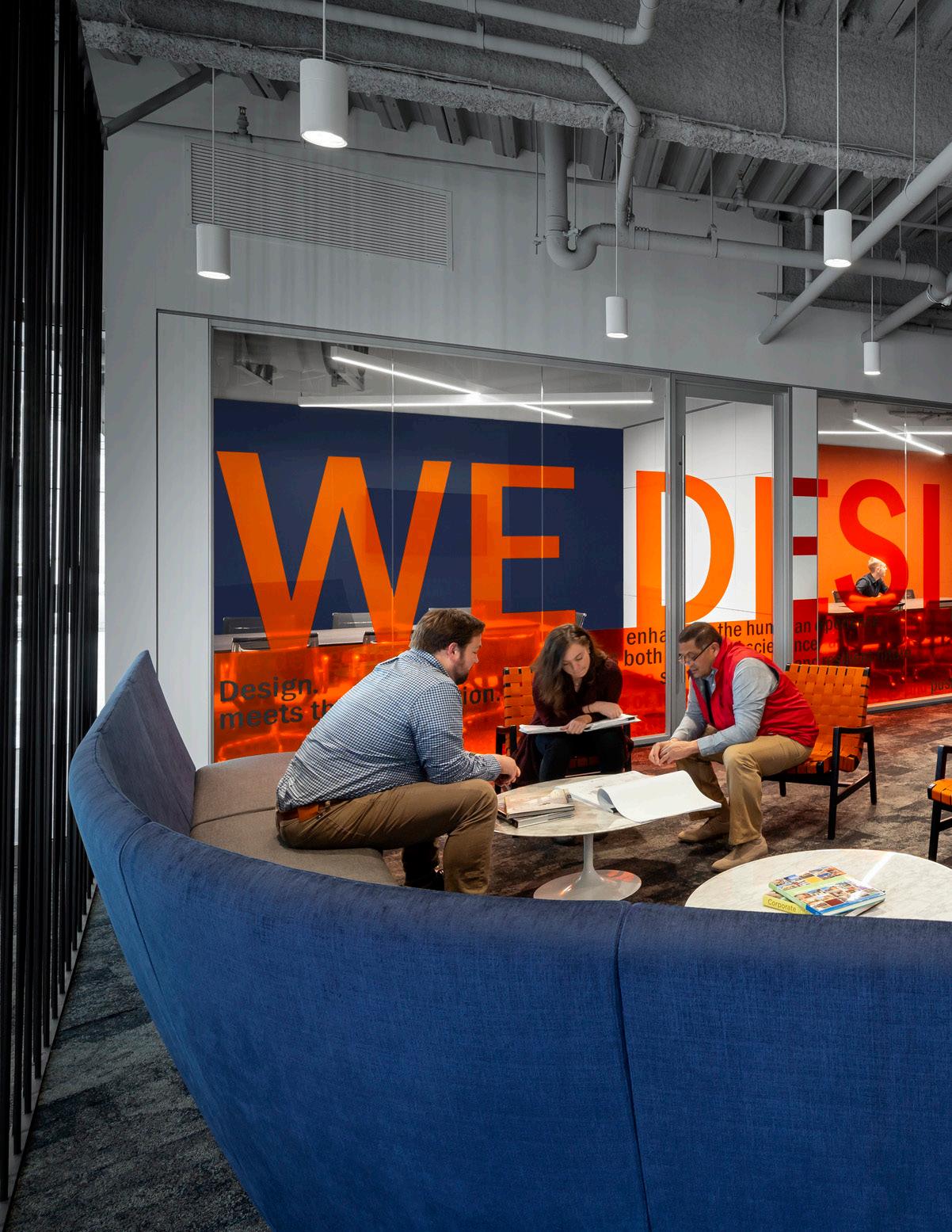
Elevating Human Experiences
After nearly two years of social distancing, there is a collective desire for meaning and connection. Yet because we are digitally habituated and used to working from home, the stakes are higher when it comes to workplace design. It’s more important than ever to understand what employees need and expect in the workplace—and to use that information to design a great experience.

• What makes a company a great place to work?
• What does a creative workplace look like? Click
What Makes a Company a Great Place to Work?
Employee Experience (EX) encompasses all interactions that an employee has with their company and, importantly, how those interactions stack up against their expectations. Workers say it’s a top consideration in choosing their next job. And there is plenty of evidence that EX affects productivity, retention, innovation, and profitability.
Jacob Morgan, author of The Employee Experience Advantage, identifies three components of the employee experience: Culture, Technology, and Physical Space. Culture refers to the beliefs, attitudes, and practices shared by employees. Technology, the “central nervous system of the organization,” includes the entire suite of digital tools available to employees. Physical space refers to everything processed through the senses, from acoustics and thermal comfort to light quality and ergonomics.
Frameworks like these help us to make sense of complexity and look at problems in new ways; addressing EX through the lens of Culture, Technology, and Physical Space facilitates a holistic approach to employee experience design.
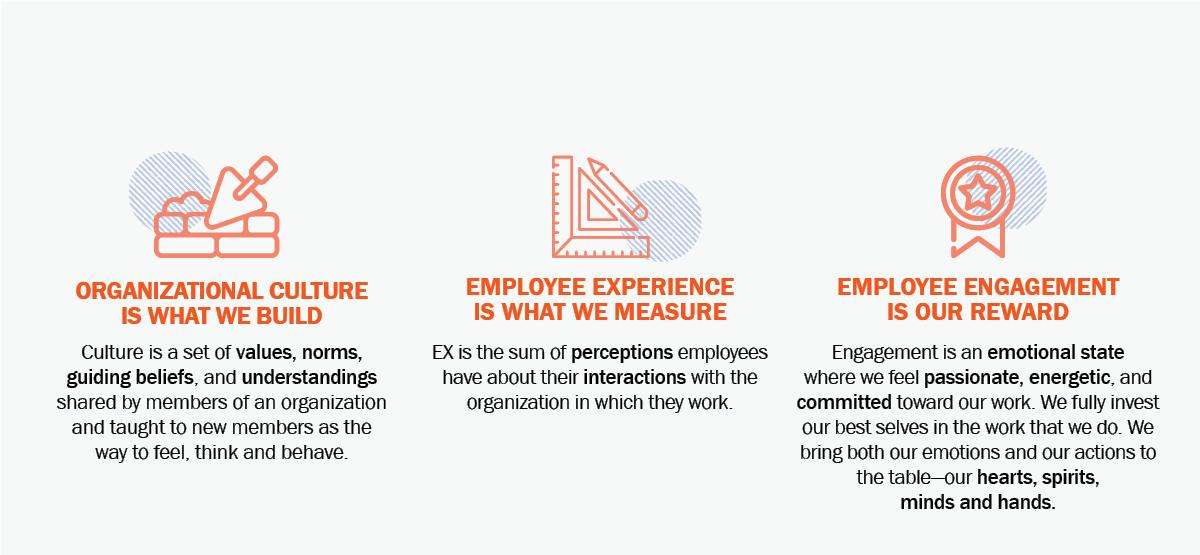
https://decision-wise.com/resources/infographics/difference-between-organizational-culture-the-employee experience-and-employee-engagement/
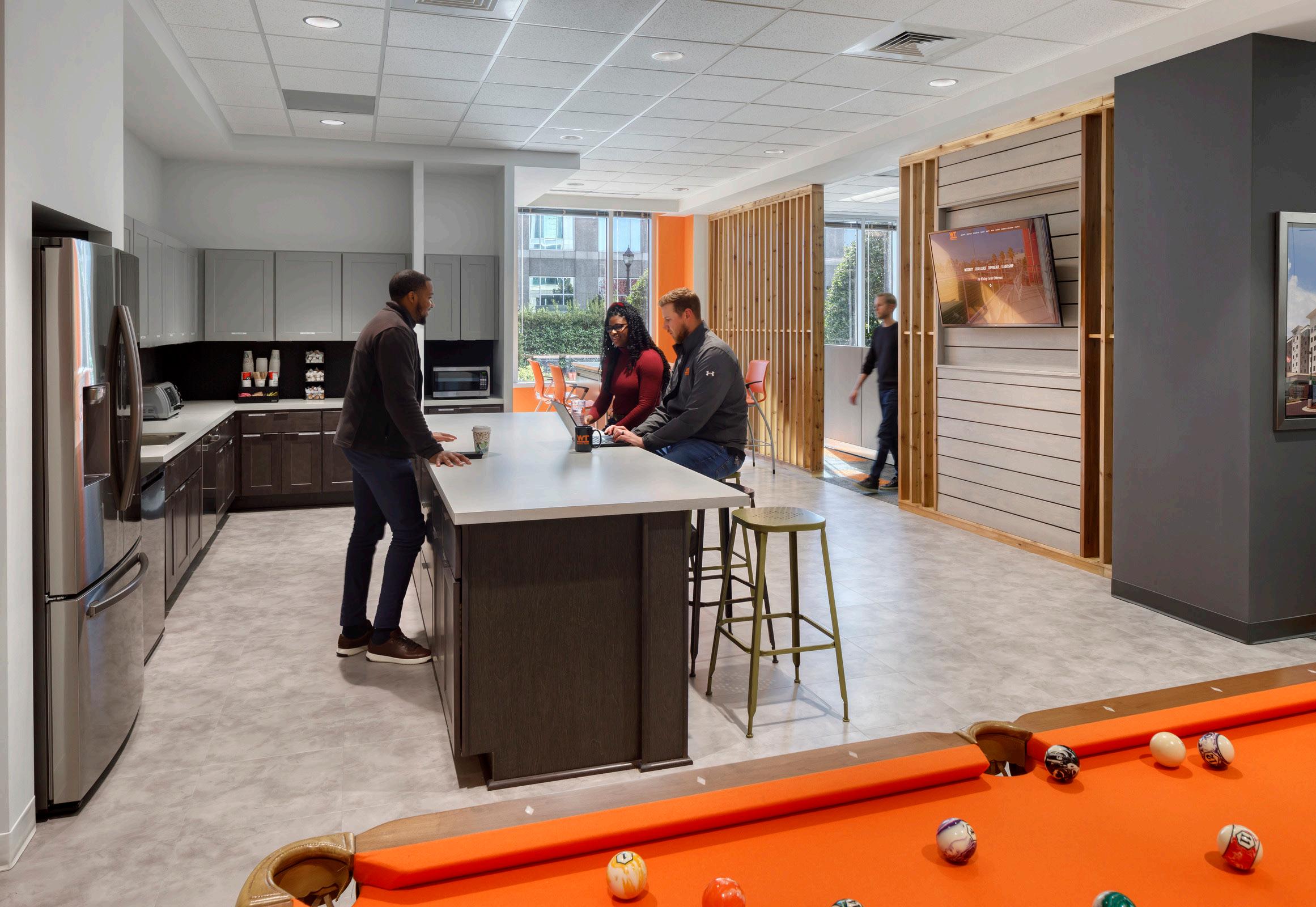
Foster Happiness & Connection
• Provide flexible spaces that can adapt to different purposes and postures
• Incorporate mood-boosting aesthetics like ample daylight, colorful art, textured fabrics, and layered patterns
Think Human
• Address shifts in culture and physical space in conjunction with technology
• Implement technology solutions to support different work styles, tasks, and preferences
Observe and Engage
• Use design thinking to create spaces that respond to user needs
• Create employee journey maps to identify and shape significant touchpoints in the environment
Taking the time to understand what employees need, want, and expect pays dividends in creating a better employee experience.”
— Heather Cain, NCIDQ, LEED AP ID+C Associate Principal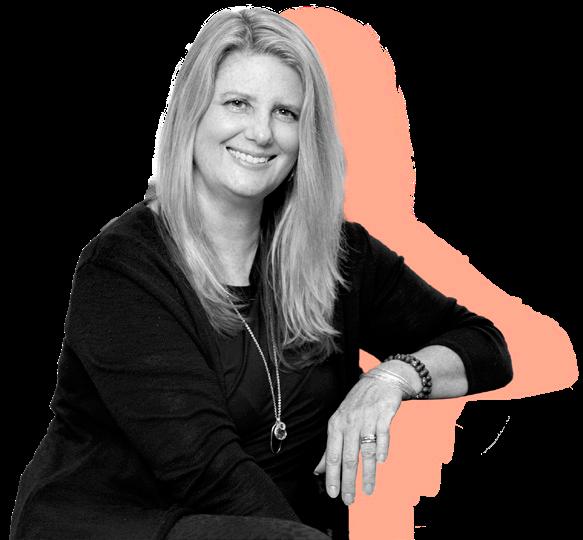
What Does a Creative Workplace Look Like?
Every year, companies invest considerable resources to boost creativity in the workplace. But design decisions are often based on vague ideas about what a creative space should look like, rather than tested and proven strategies.
Together with academic partners, we are working to shed light on the relationship between architecture and creativity. Our Design Strategy team, along with Professor Bob Condia of Kansas State University, received a ONEder grant to explore the topic in greater depth. The next phase of research, now under way, expands on our original study with a larger and more diverse group of participants.
Through our continuing research, we are working to identify evidence-based design strategies to support and facilitate creativity in the workplace.
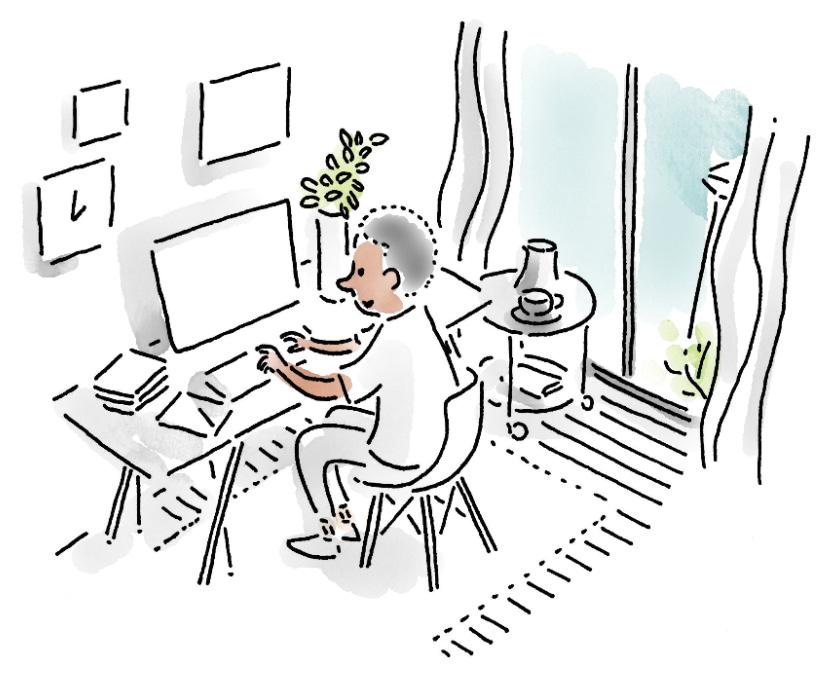
Artwork by Ling Zhong, Perkins Eastman
The Hominess Hypothesis
Annie Murphy Paul, author of The Extended Mind: The Power of Thinking Outside the Brain, writes about a phenomenon she calls the “home-court advantage.” The idea is that people are more creative when they’re “relieved of the cognitive load imposed by their environment.” Through our research, we’re exploring a working hypothesis that people are more creative in spaces where they feel at home.
Cognitive Offloading
Our cognitive capacity is limited when it comes to holding and processing large quantities of information. In today’s complex and information-heavy world, cognitive offloading—the act of transferring cognitive tasks onto the environment—is a simple way to reduce our brain’s mental load and increase its processing power.
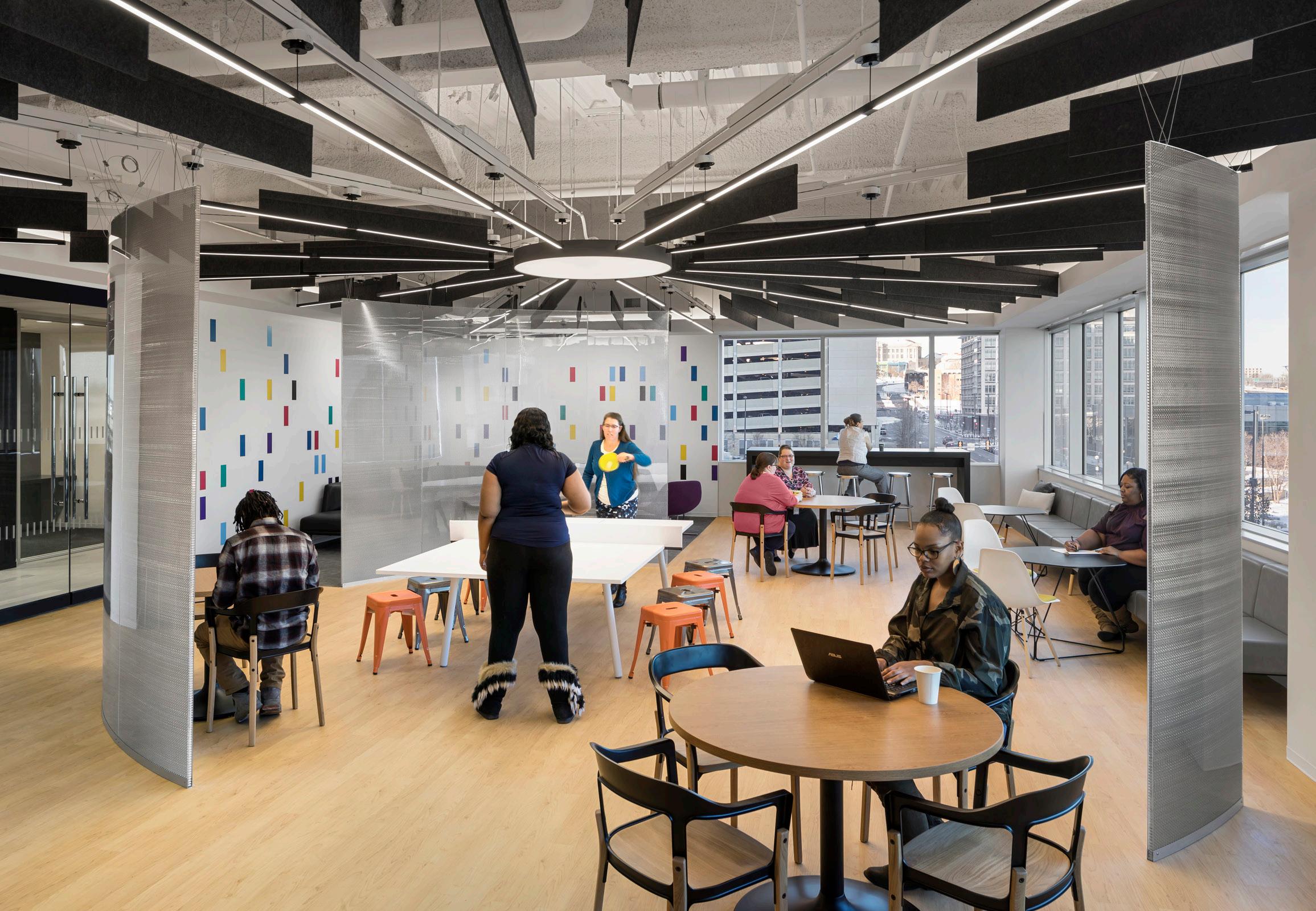
Strategies to
SUPPORT CREATIVITY
Home-Court Advantage
• Provide pin-up boards and shelves, flexible furnishings, and adjustable task lighting
• Incorporate features like adjustable-height partitions and sound-buffered focus rooms to mitigate visual and auditory distractions, particularly in open-plan settings
Play
• Incorporate round and spherical furnishings, vaulted ceilings, game lounges, and other unexpected or playful design elements to encourage outside-the-box thinking
Room to Create
• Provide ample task space, including white boards, pin-up space, and large or multiple computer monitors to facilitate cognitive offloading
To make a safe space for novel ideas and original thinking, we must challenge our discomfort around the change and uncertainty that may come with creativity. Fostering creativity allows us to harness wide-ranging benefits, from boosting morale to attracting top talent.”
— Lindsay Fischer, RPP, MCIP Associate | Design Strategist CONFIDENTIAL FINANCIAL FIRM: OMAHA OMAHA, NE
CONFIDENTIAL FINANCIAL FIRM: OMAHA OMAHA, NE
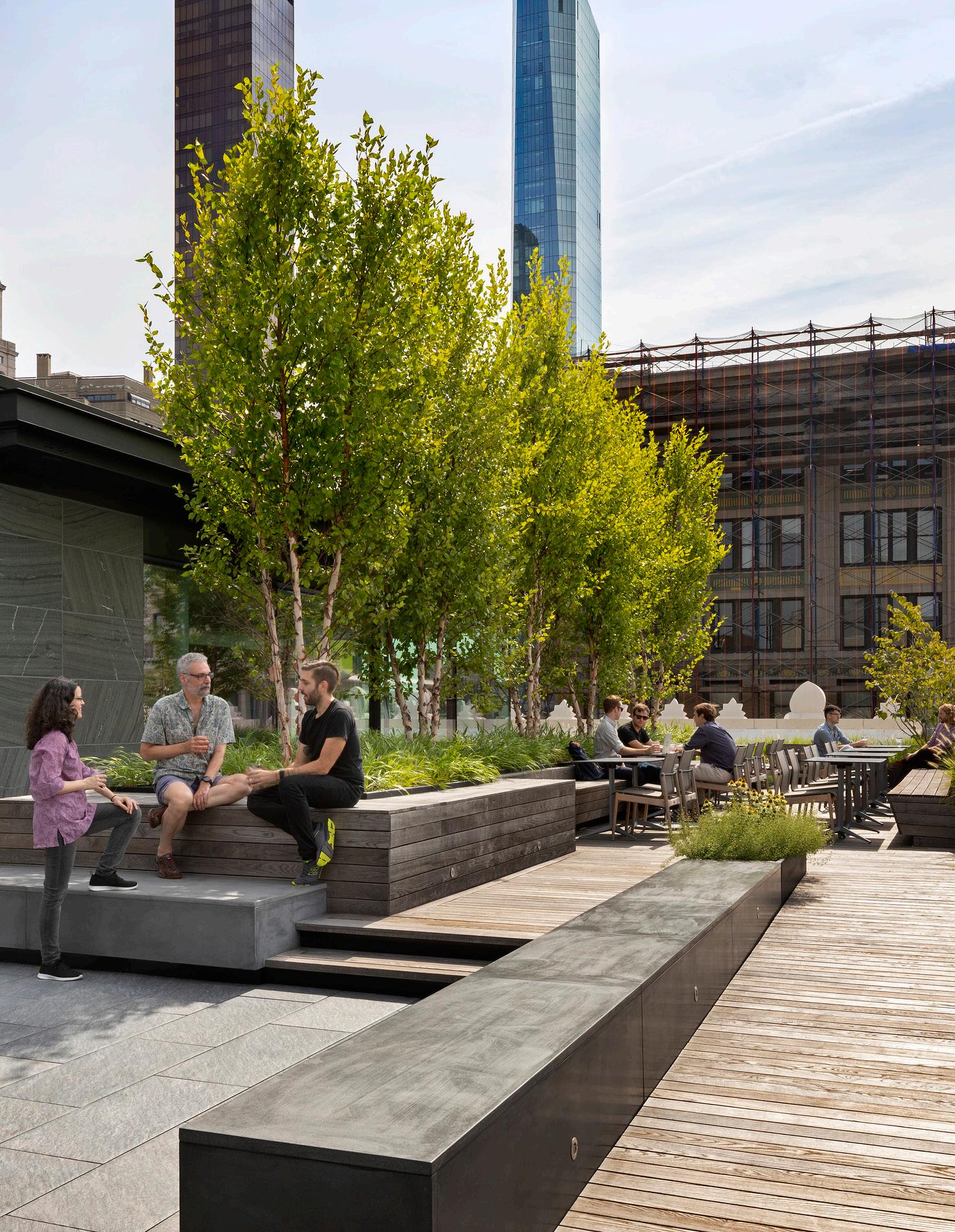
CREDITS
Author: Perkins Eastman Design Strategy
Photography: Copyright Sarah Mechling. Courtesy Perkins Eastman: page 26
Copyright Chris Cooper/Courtesy Perkins Eastman: pages 21-22, 35
Photography Andrew Rugge/Courtesy Perkins Eastman: Cover and Back Image, pages 3-4,5-6, 8, 10, 12, 13-14, 16, 19, 20, 24, 28, 29-30, 32, 34
Graphics Copyright: Perkins Eastman: pages 3, 4, 7, 9, 11, 15, 17, 19, 23, 25, 27, 31, 33
Icons: The Noun Project: pages 1-2, 8, 10, 12, 16, 18, 20, 24, 26, 28, 32
